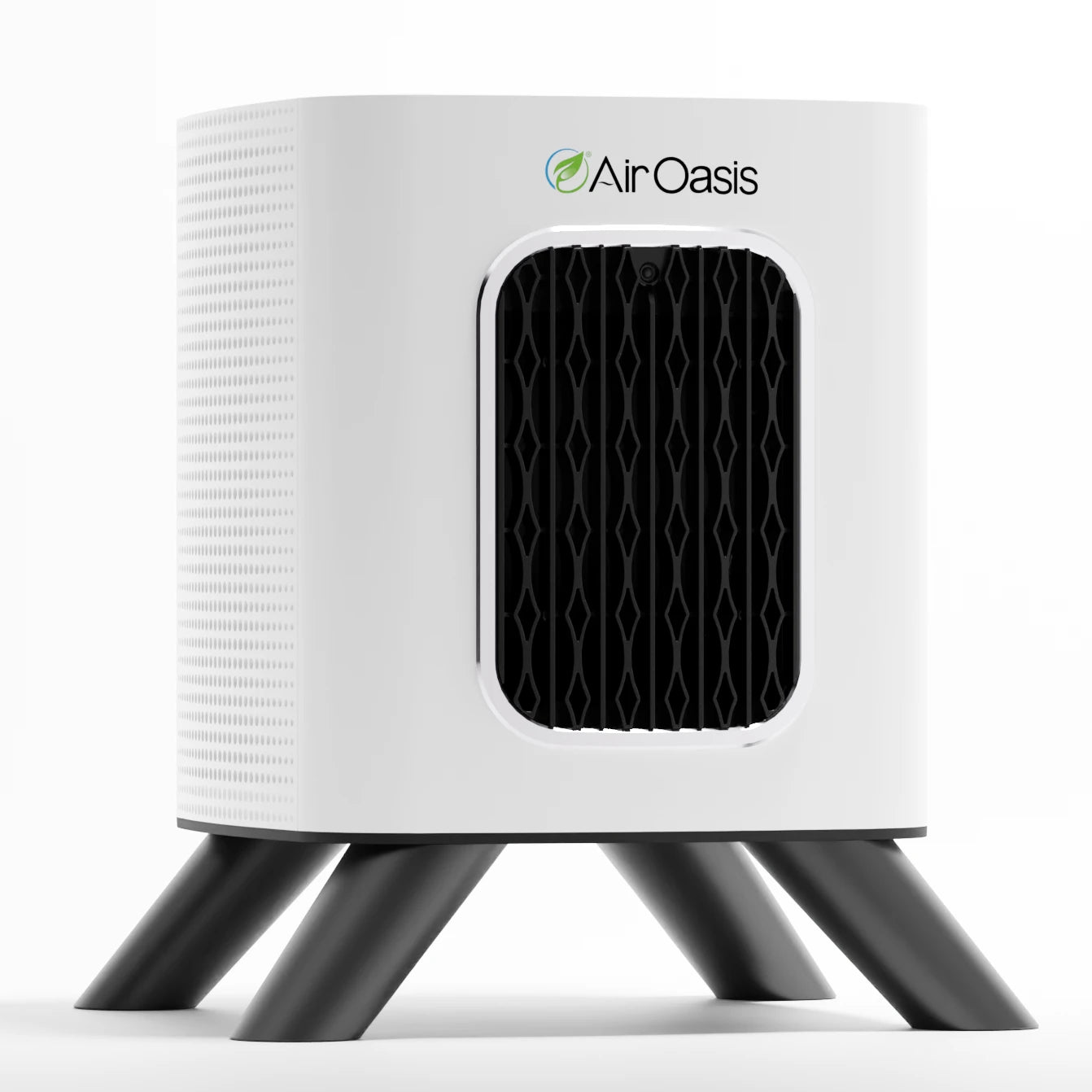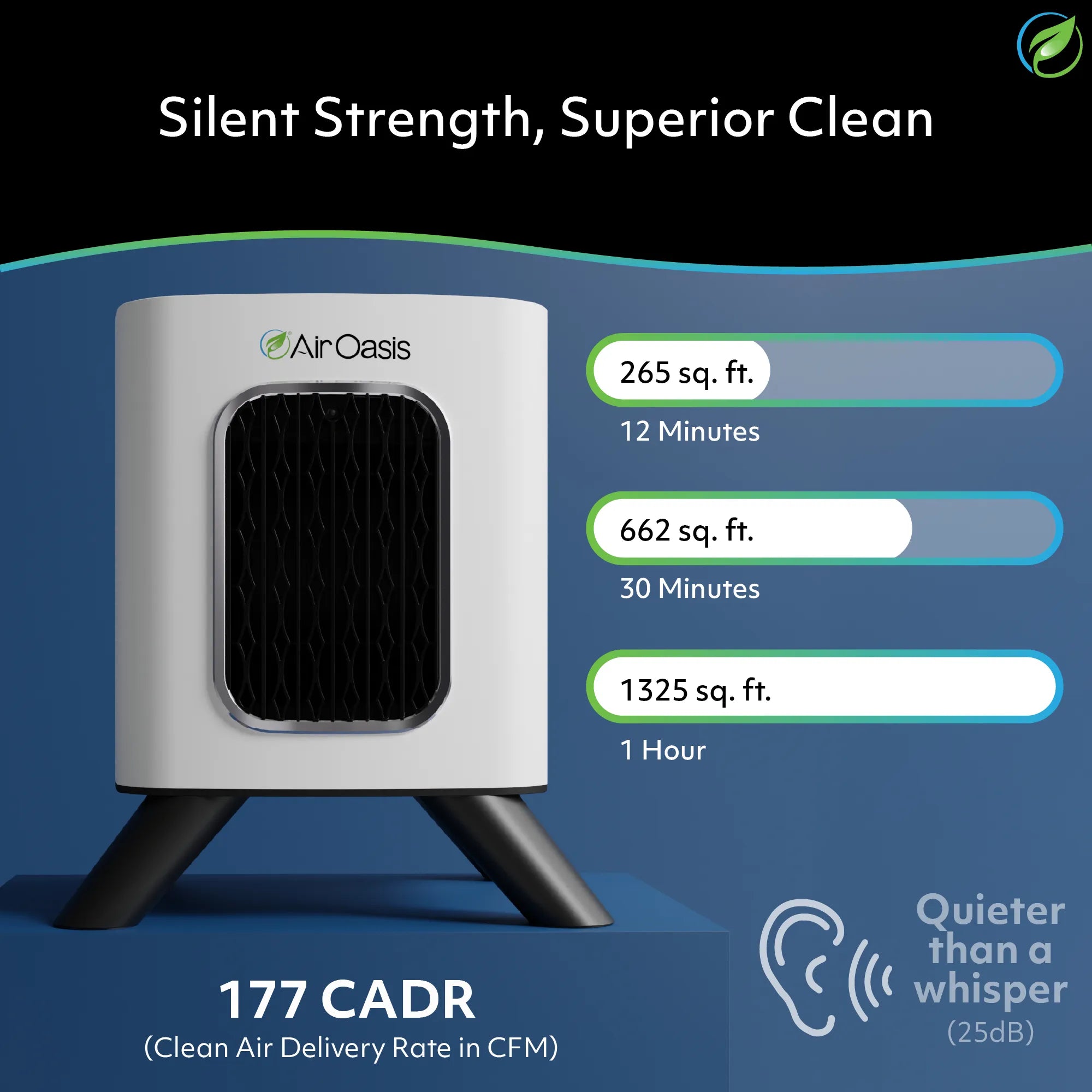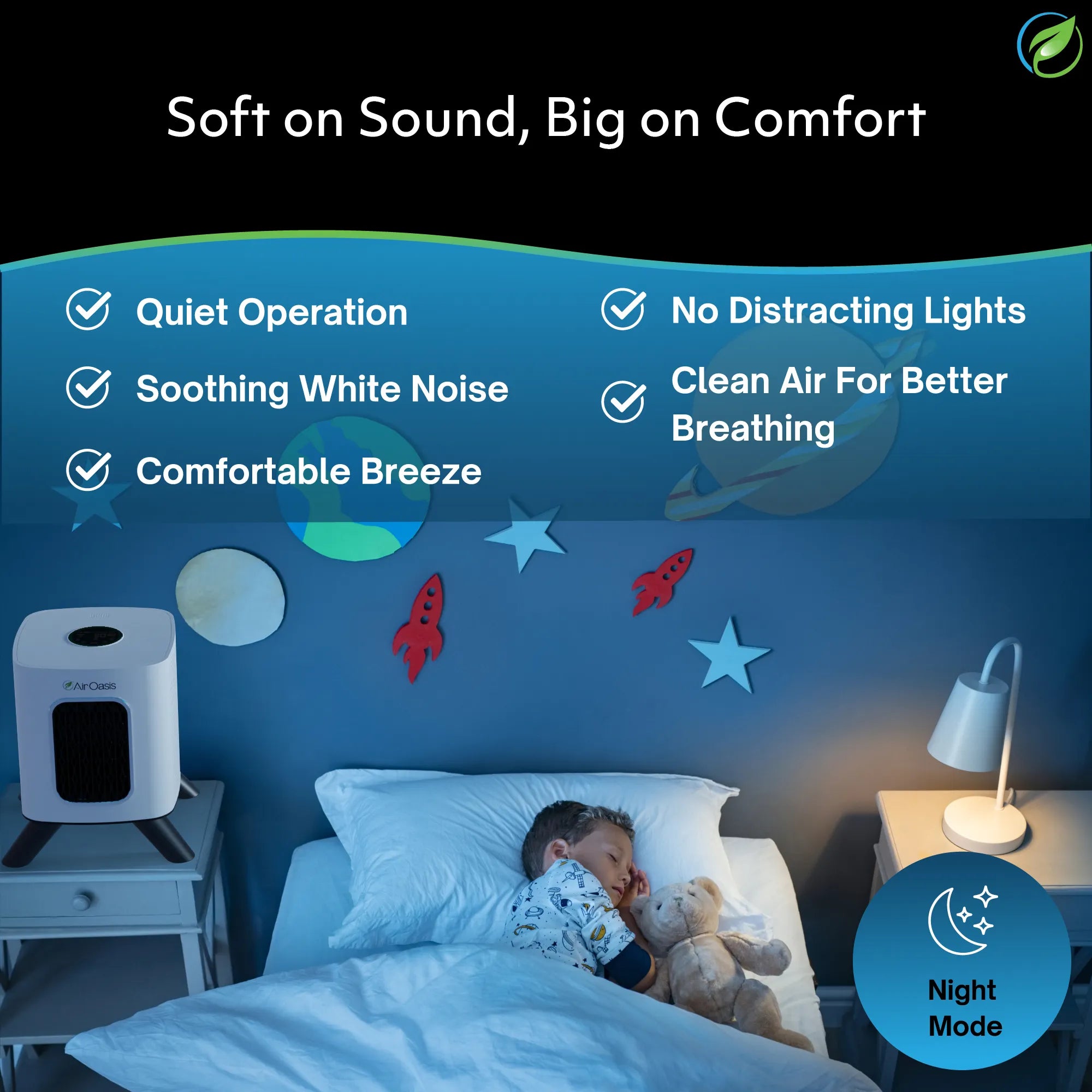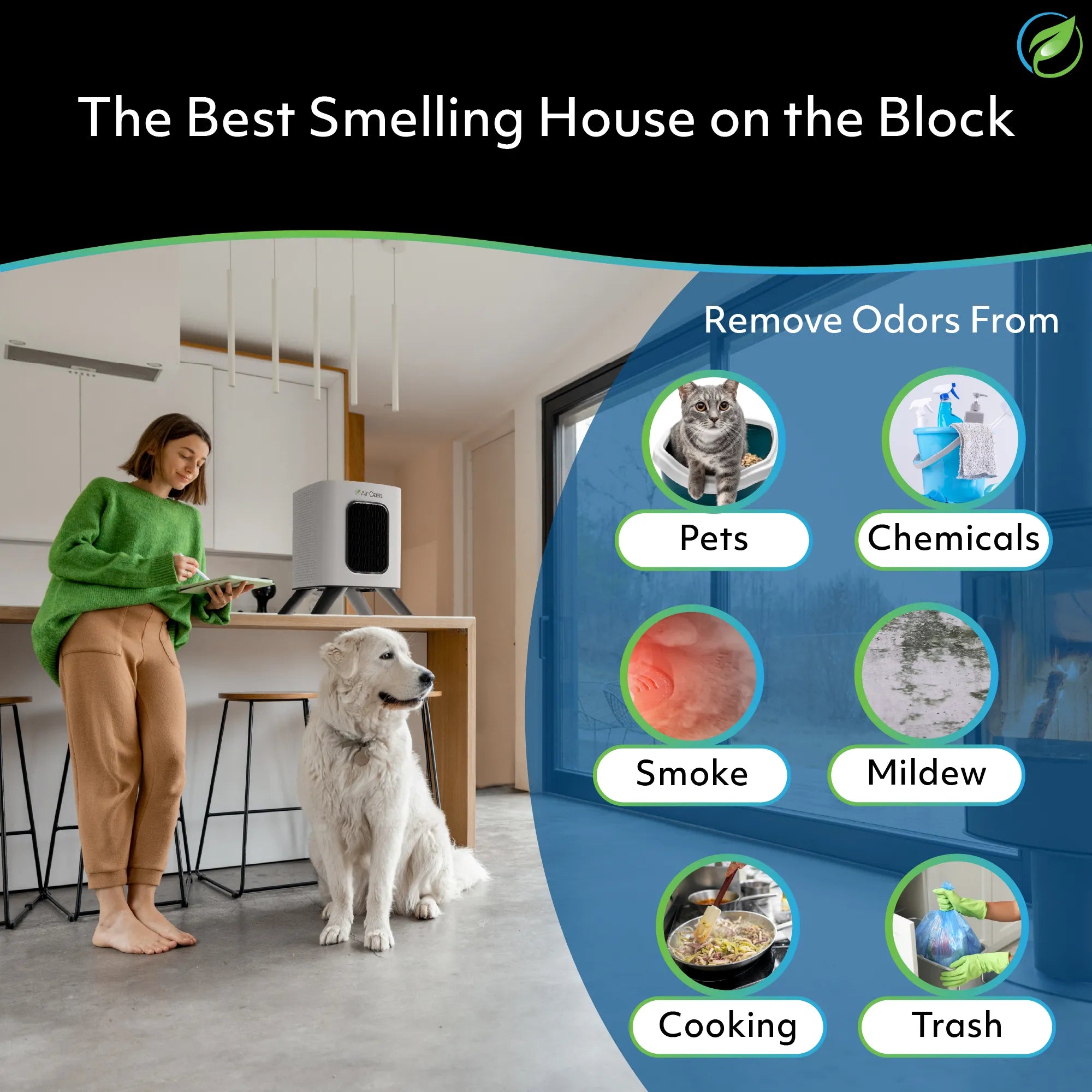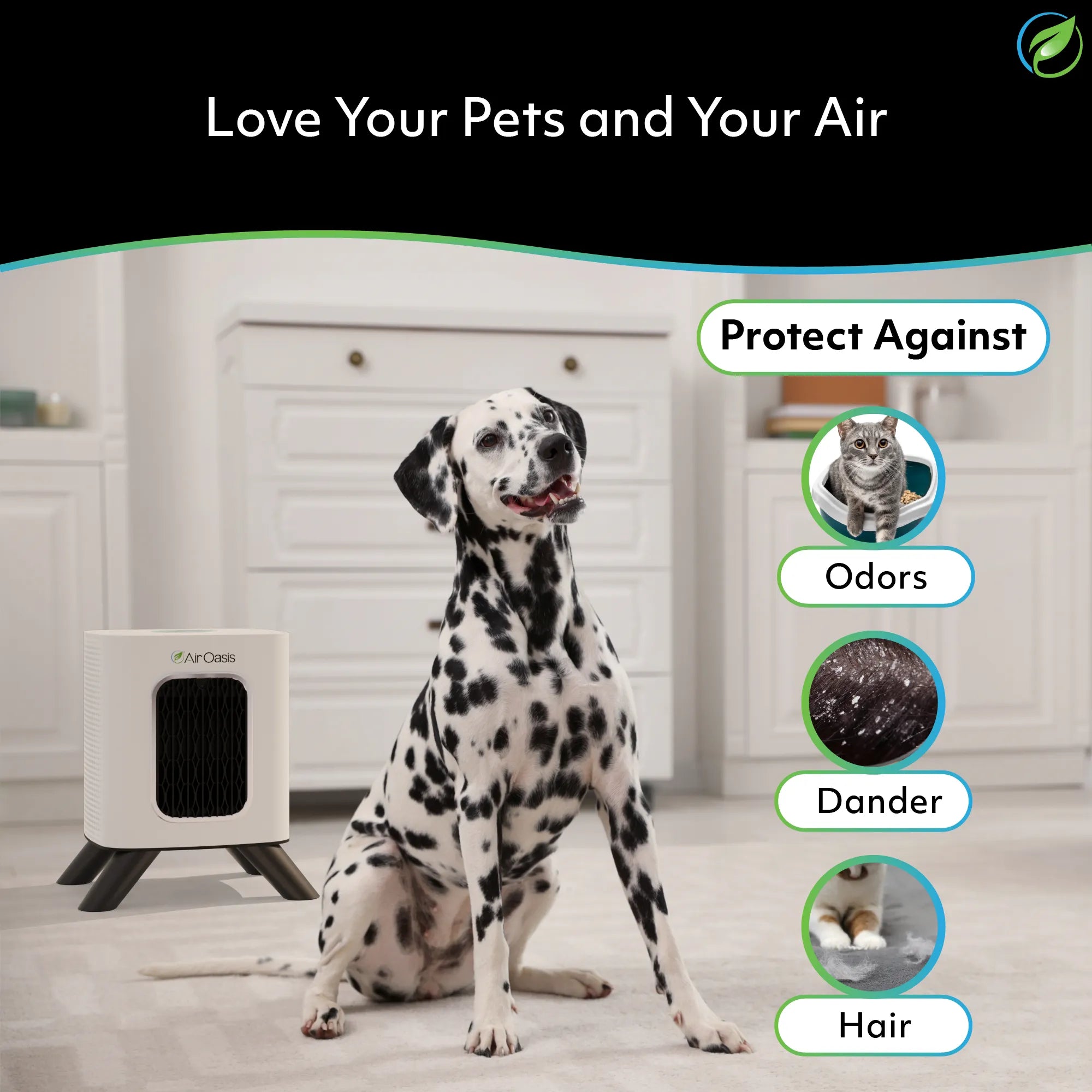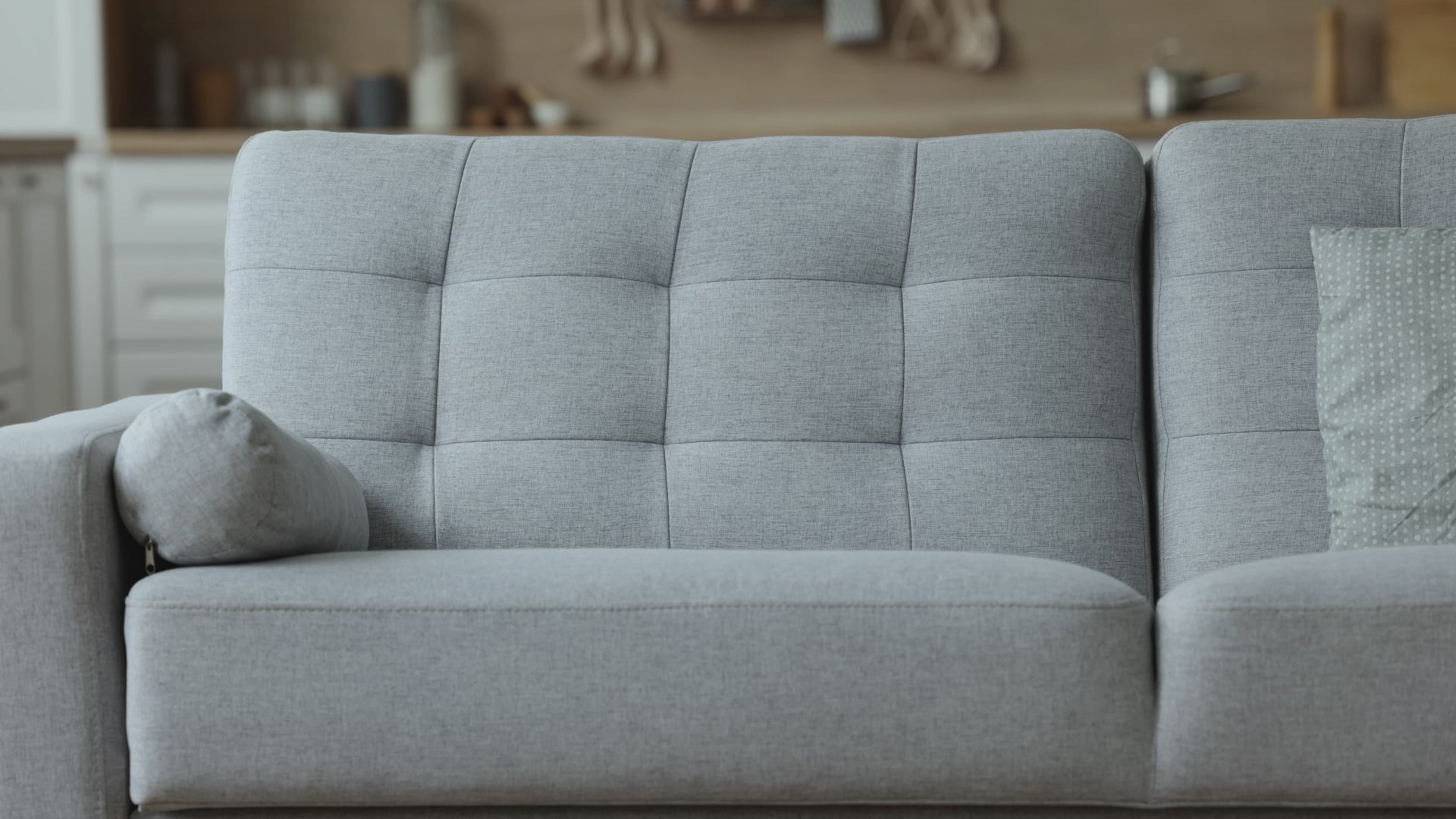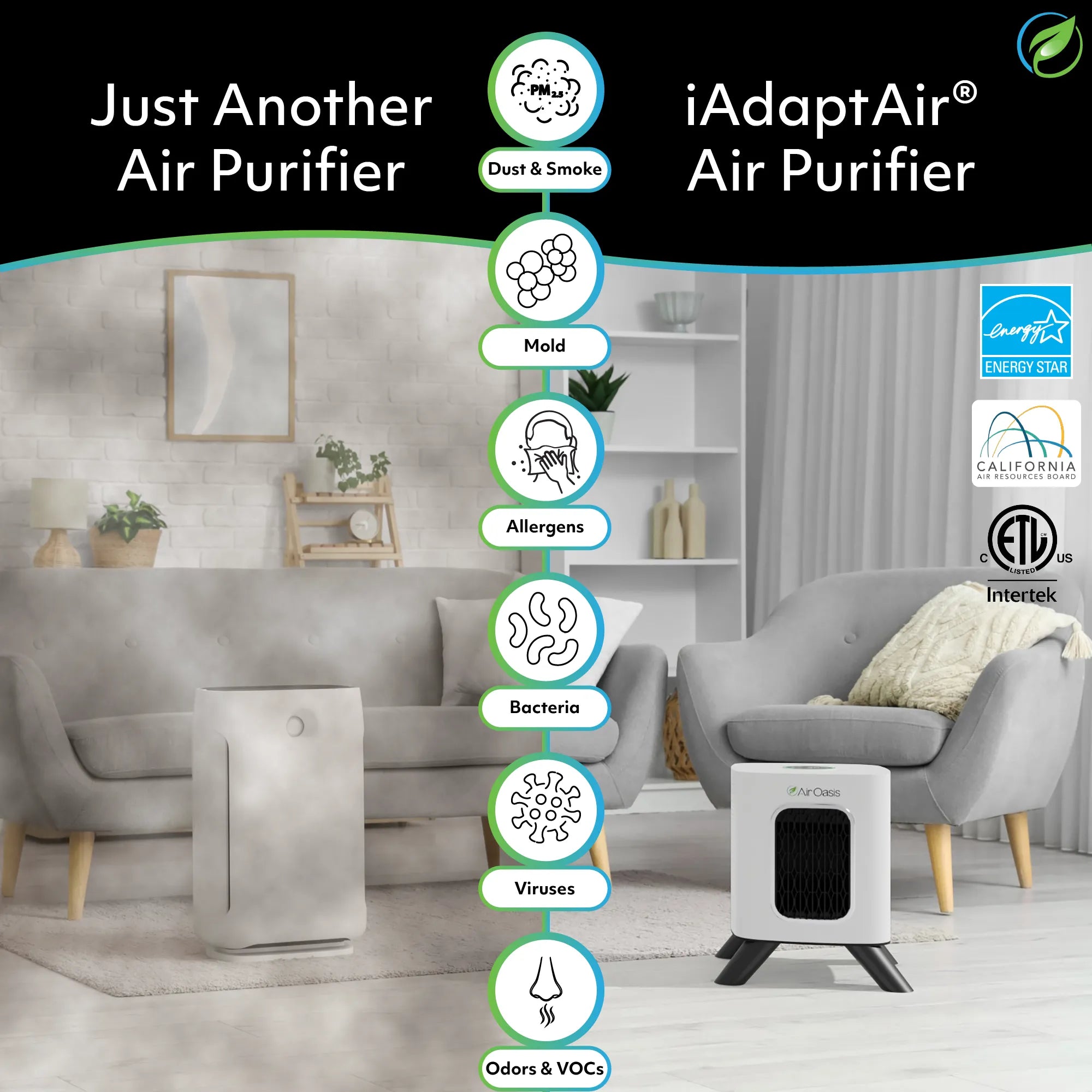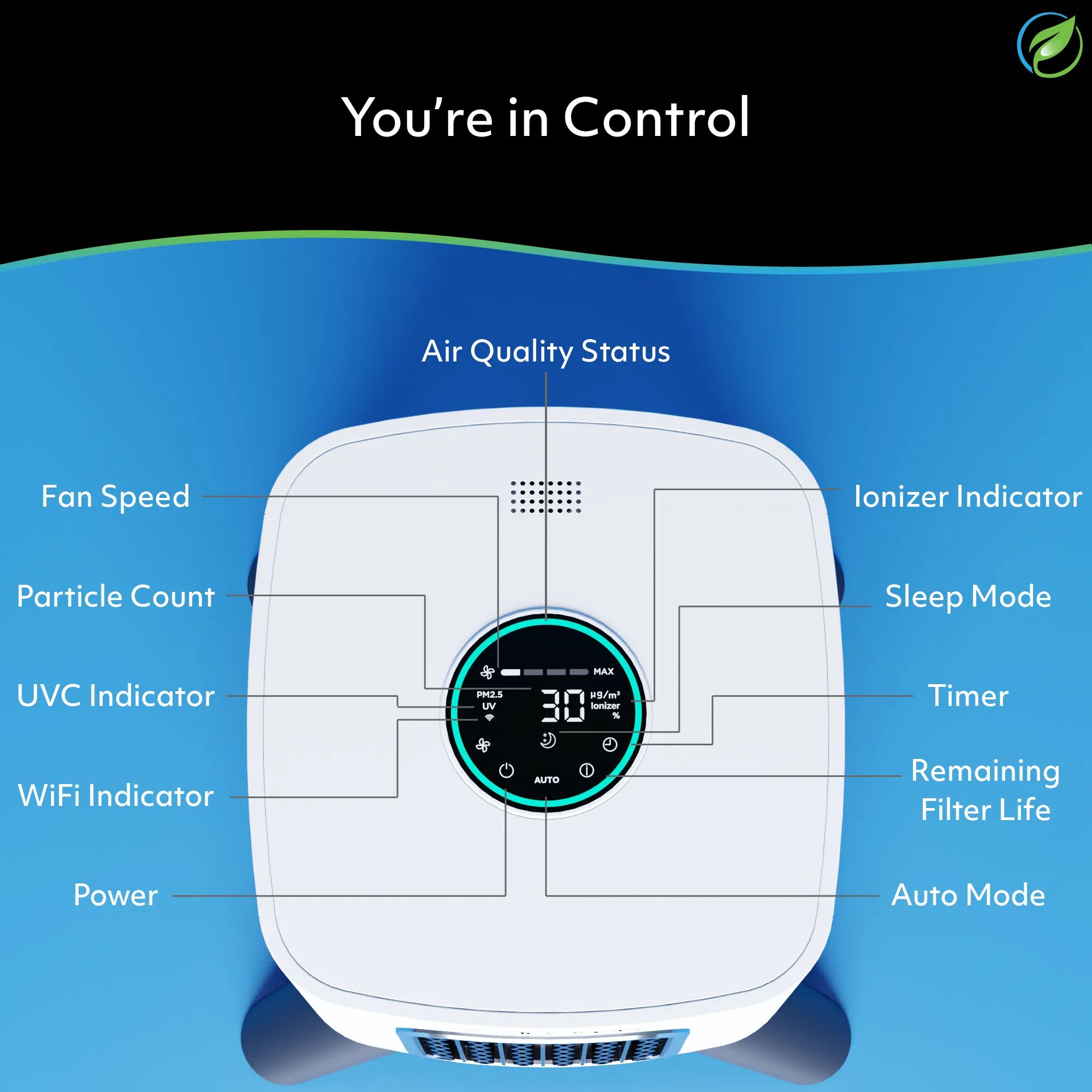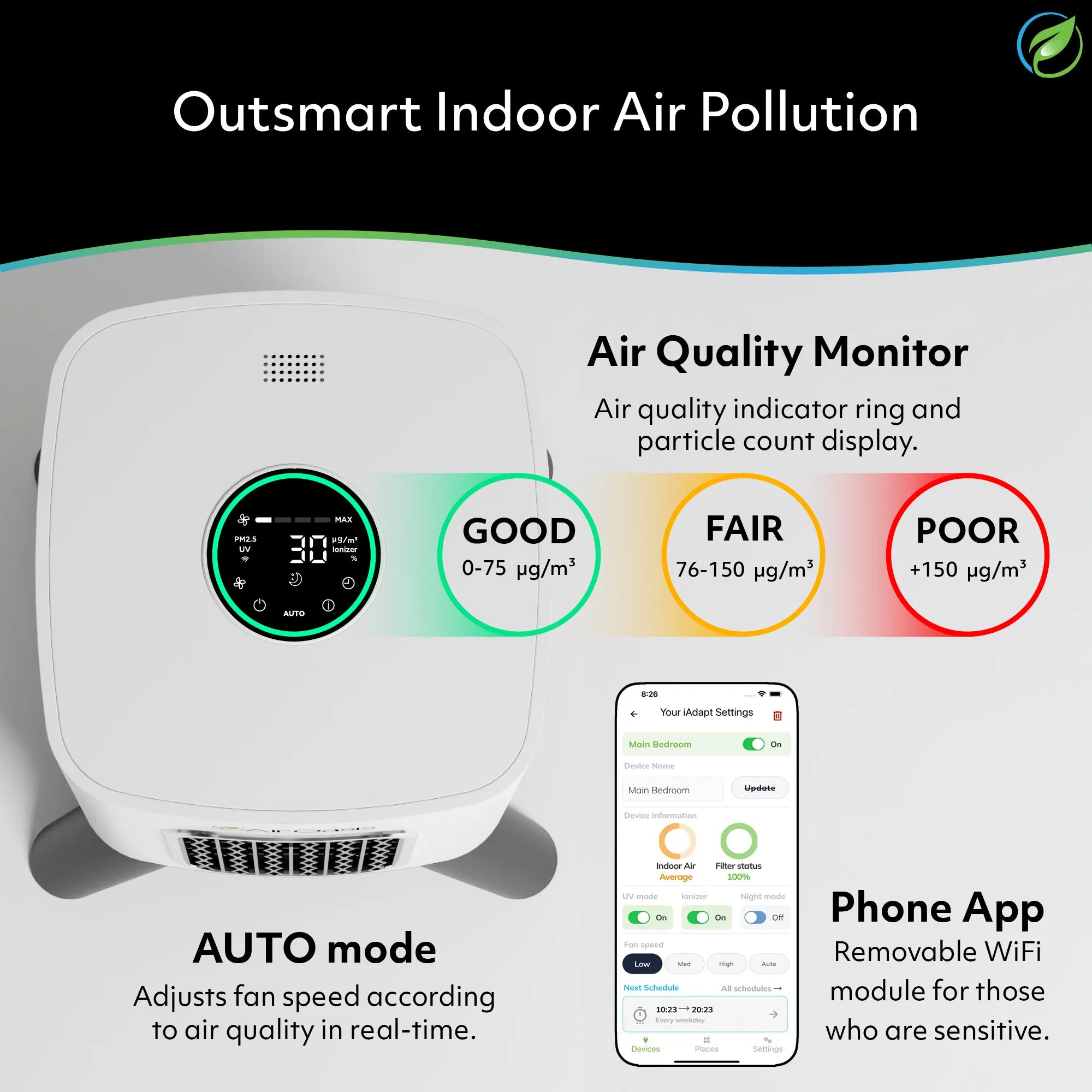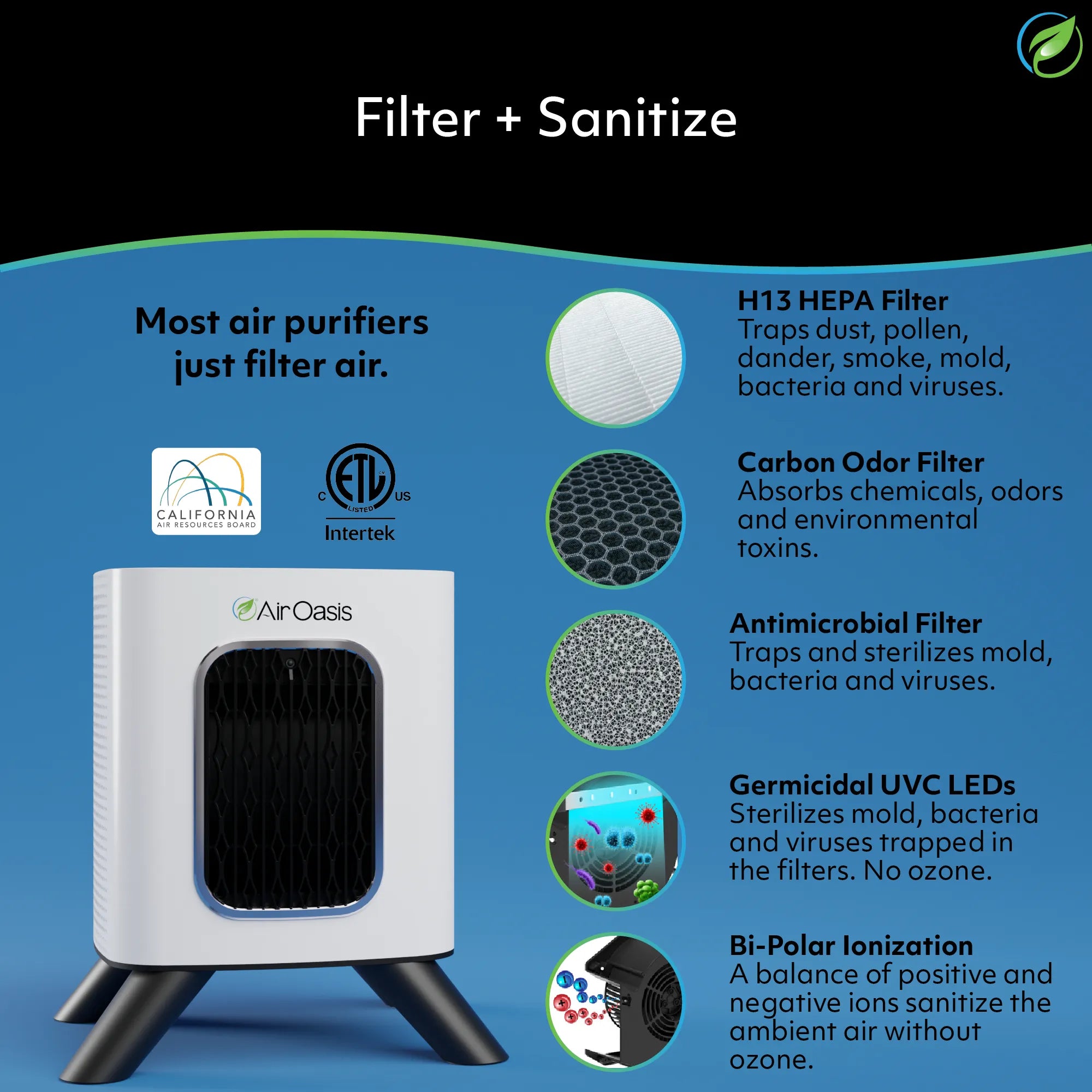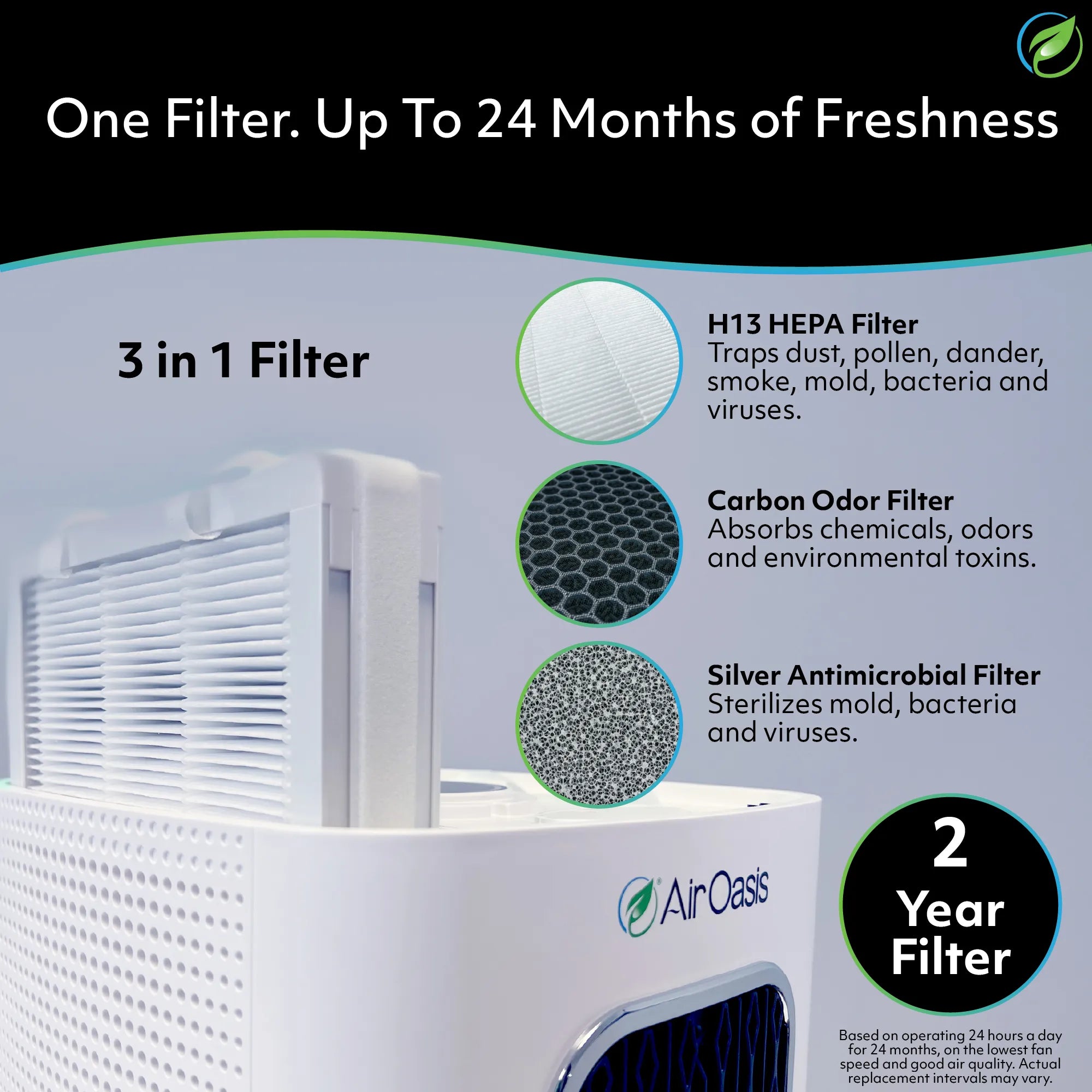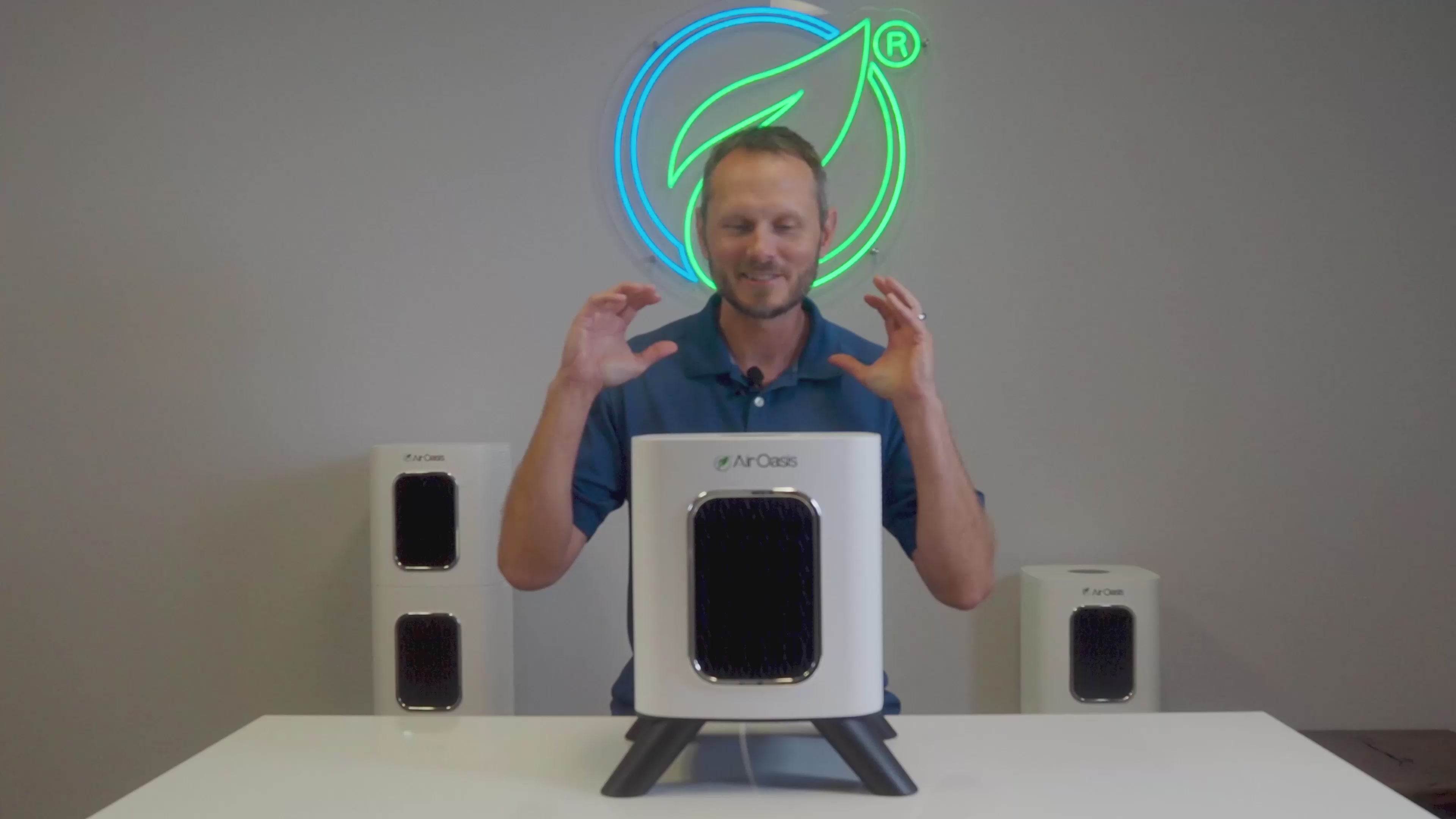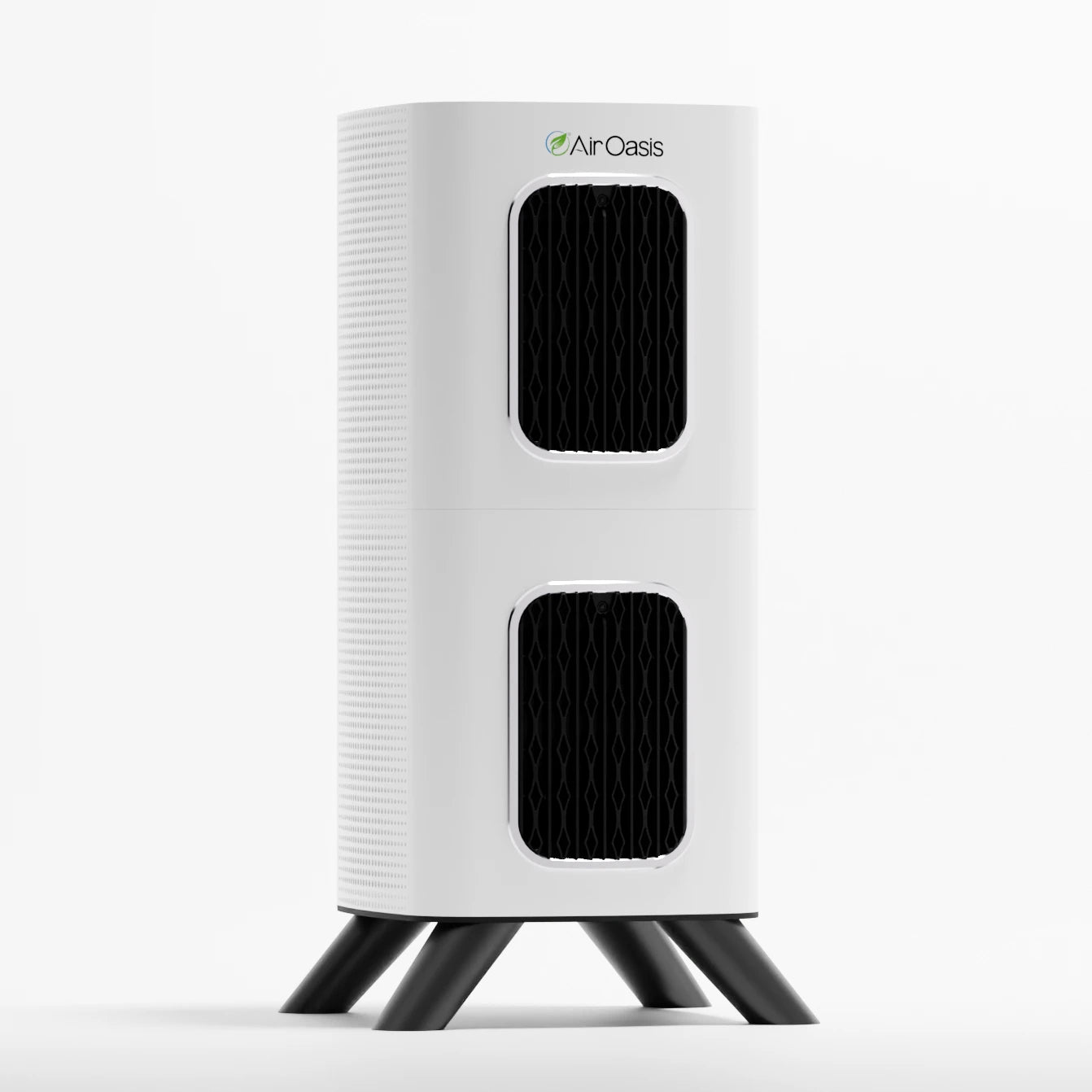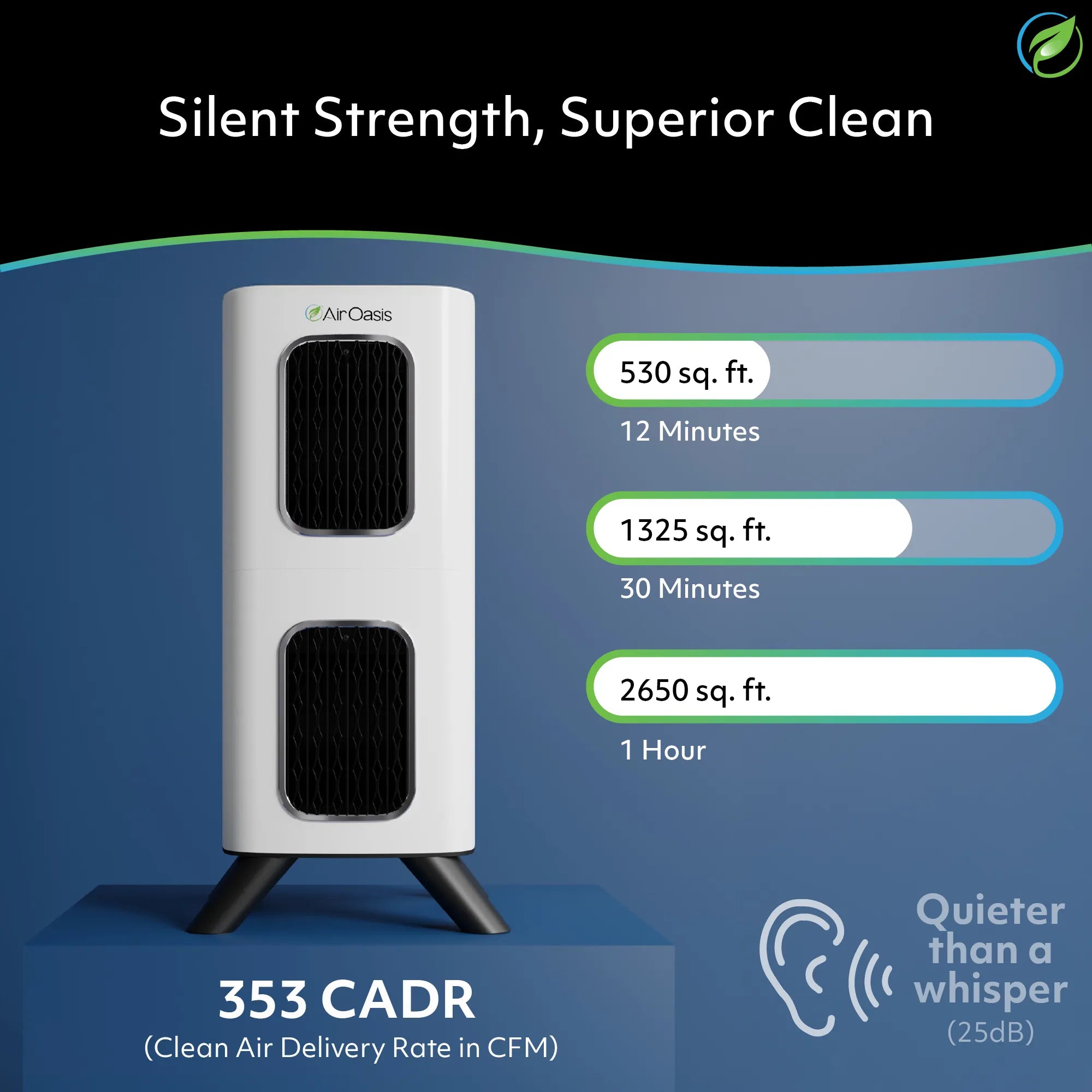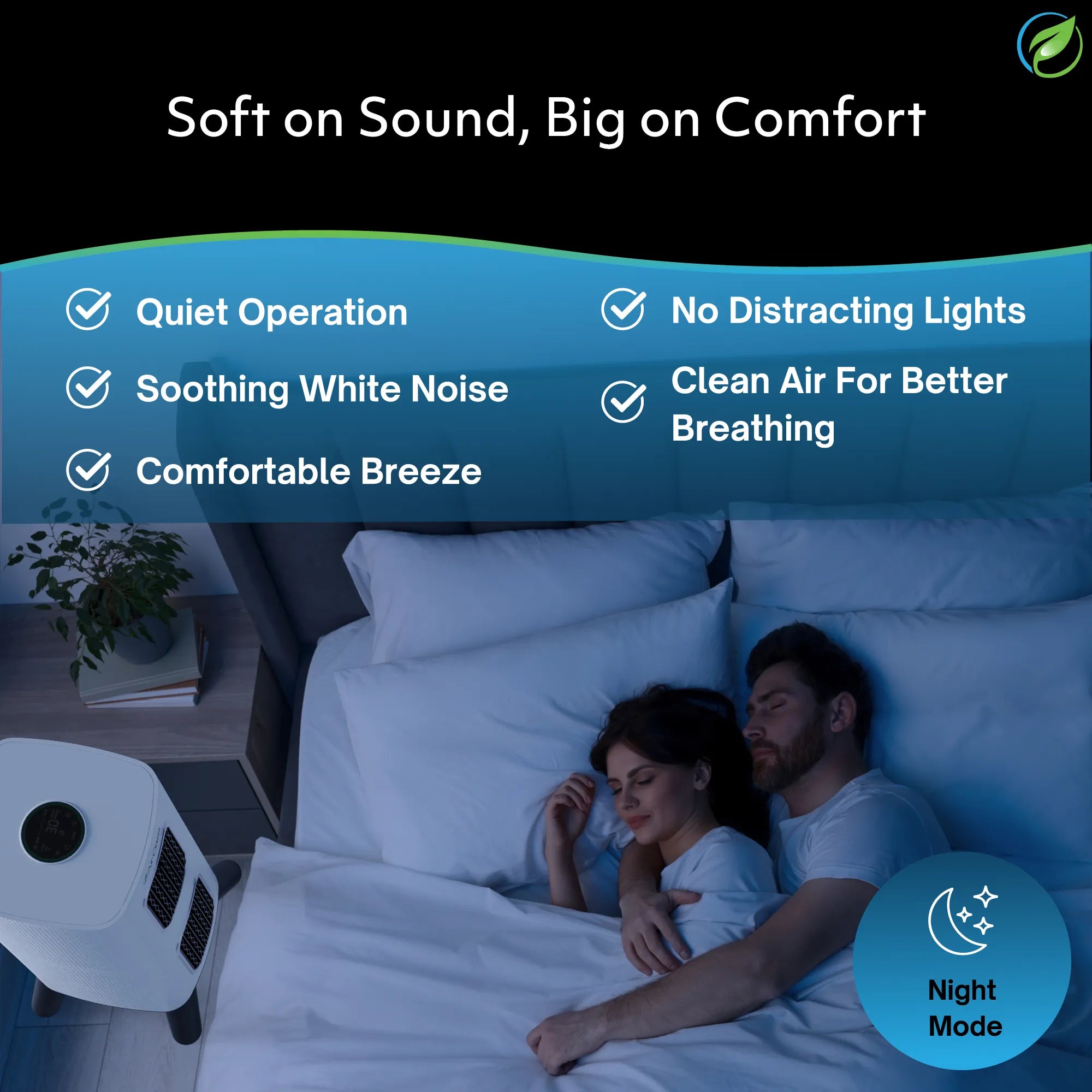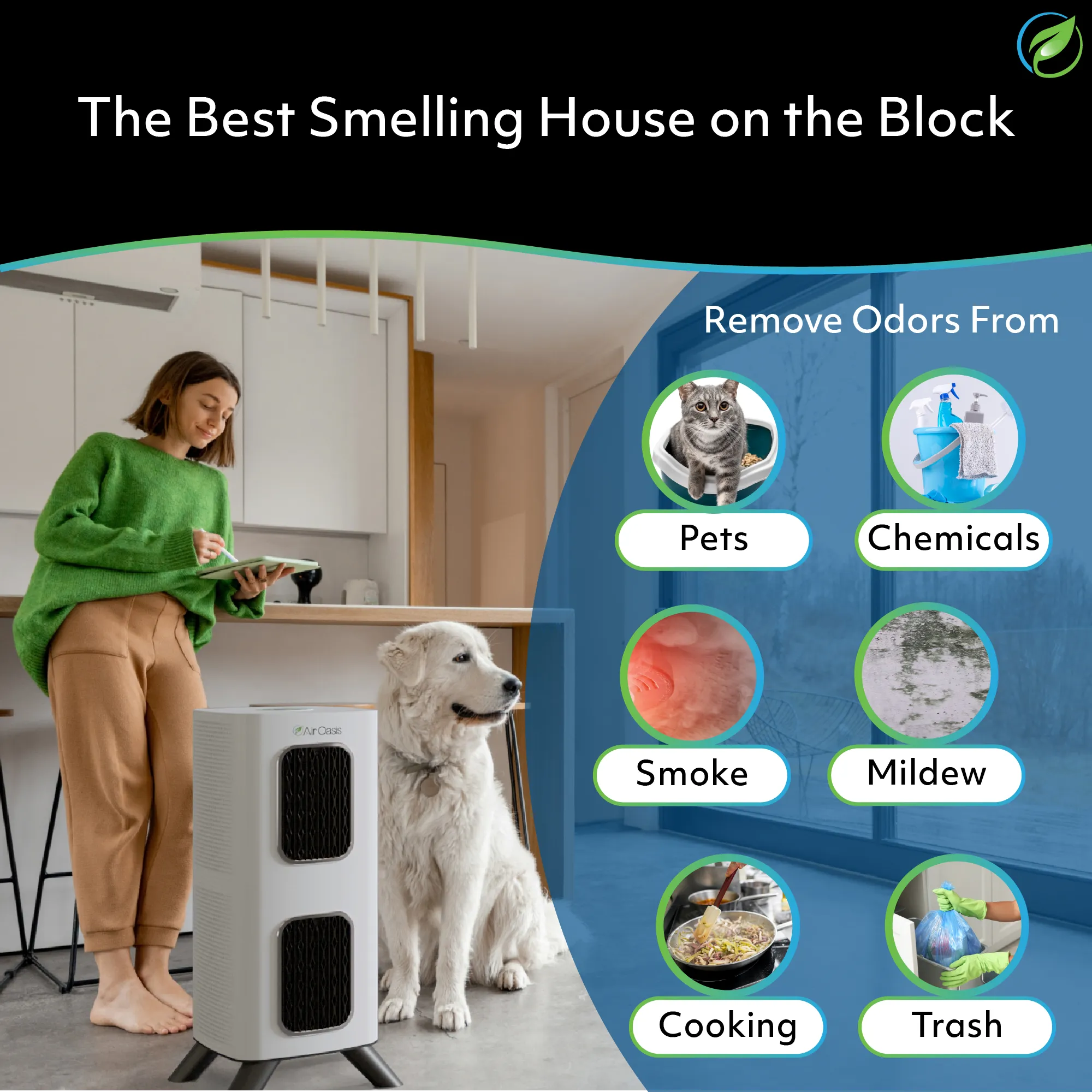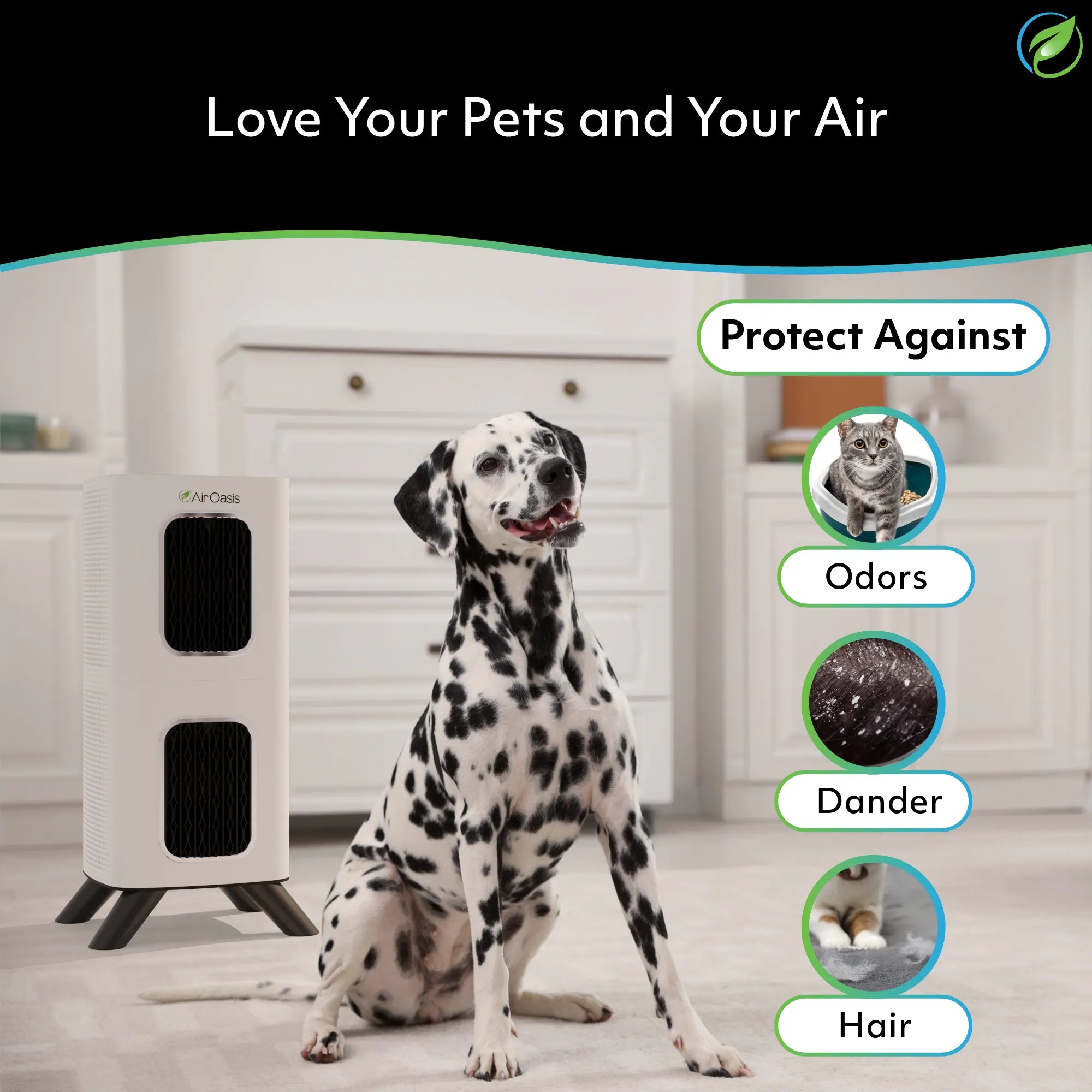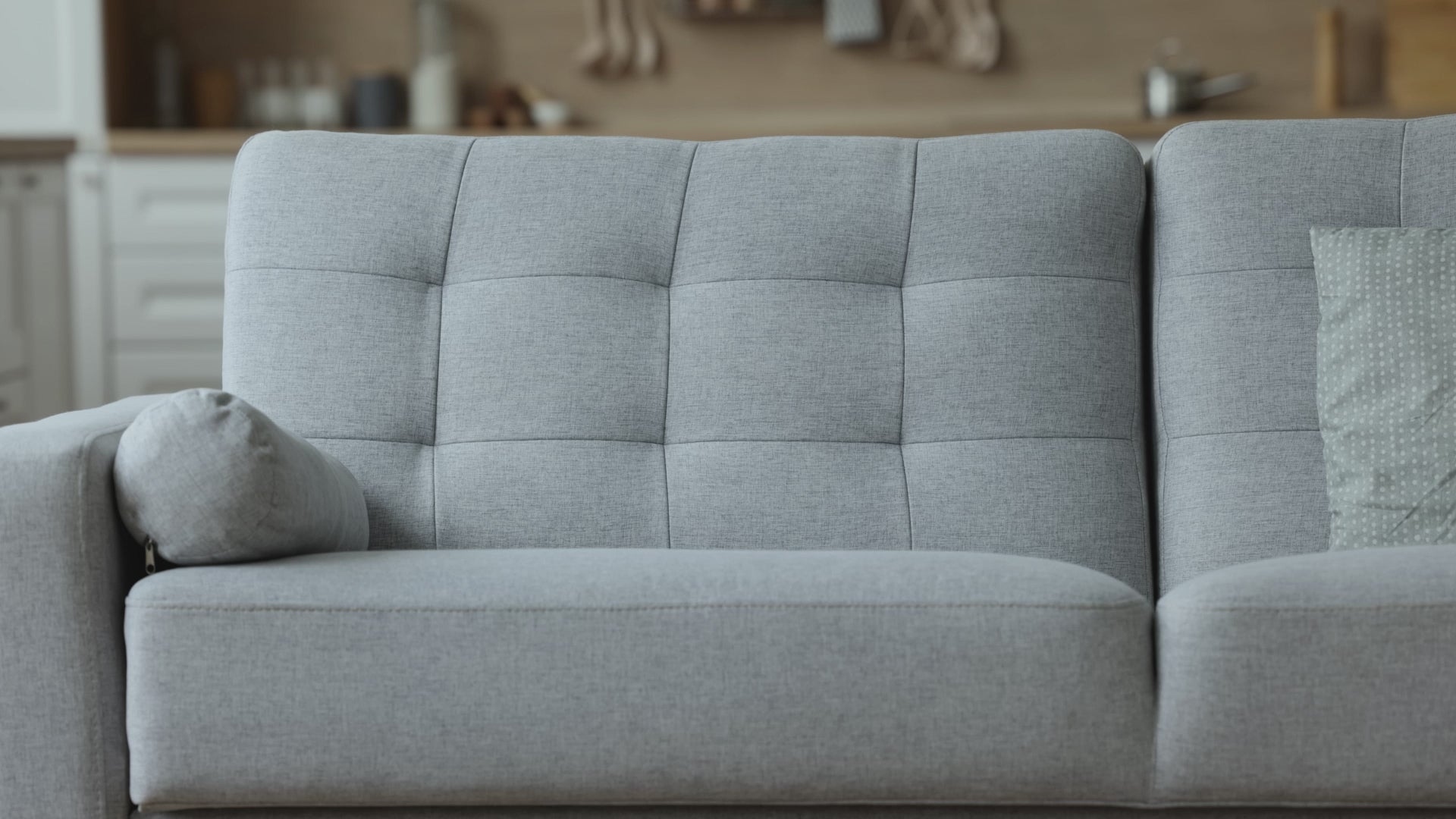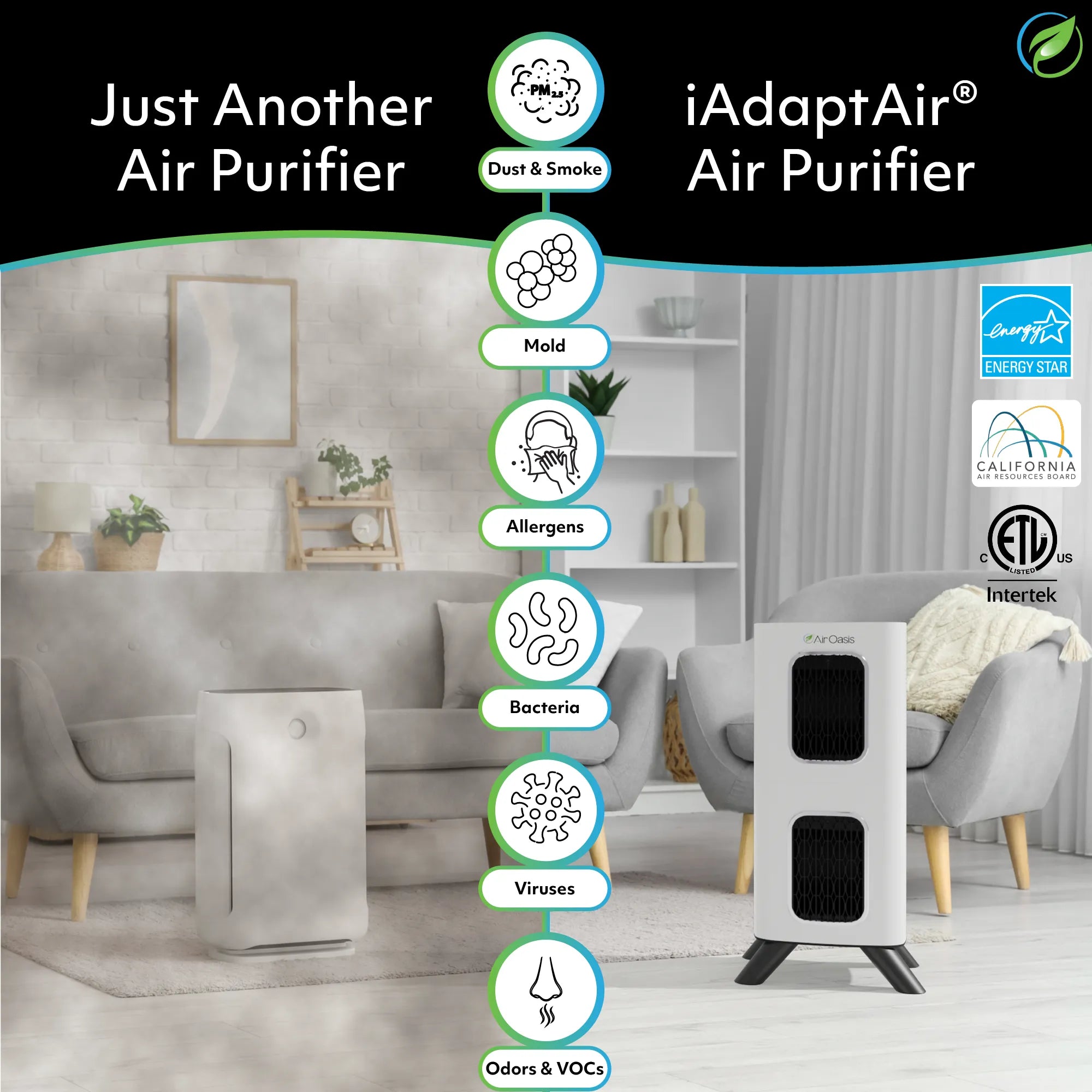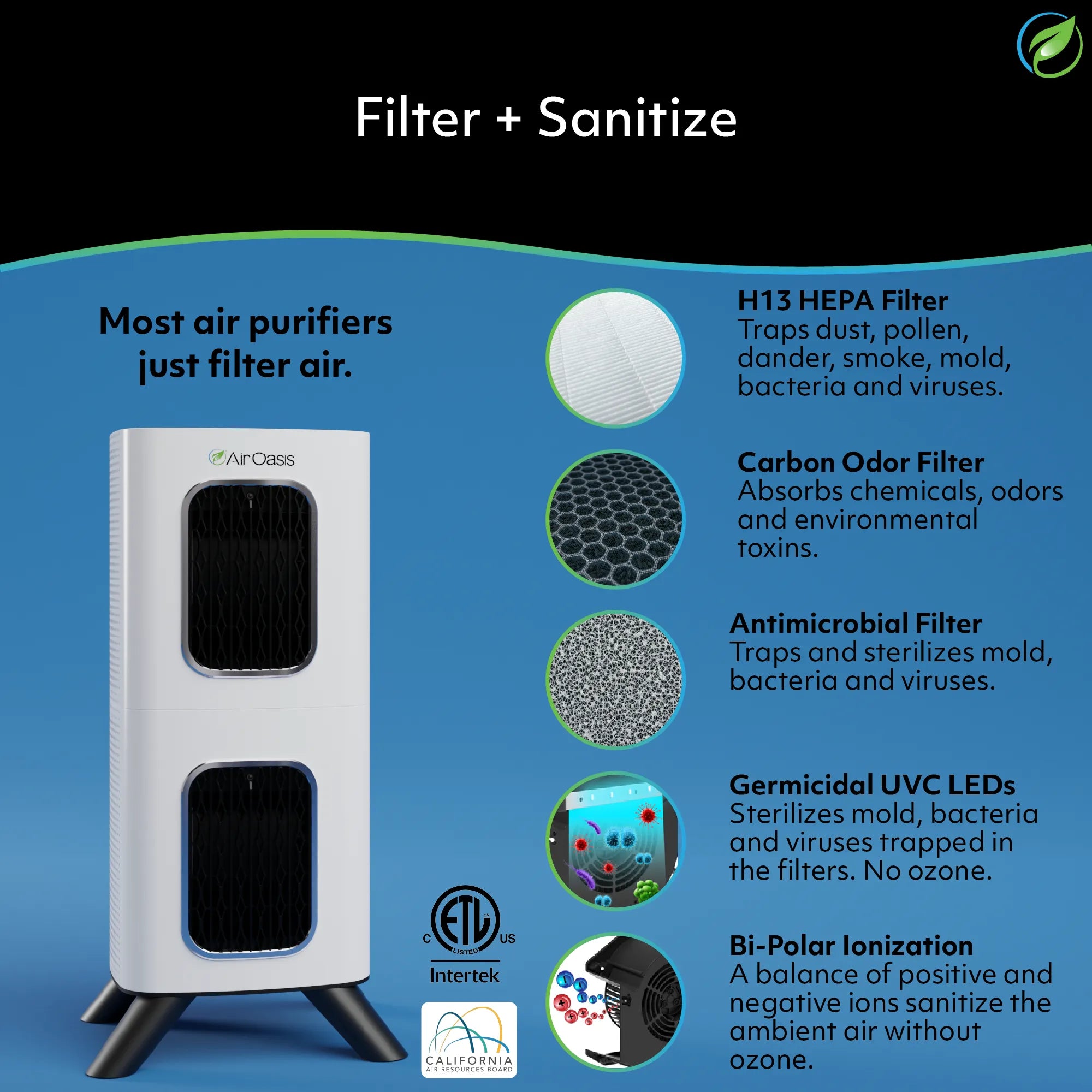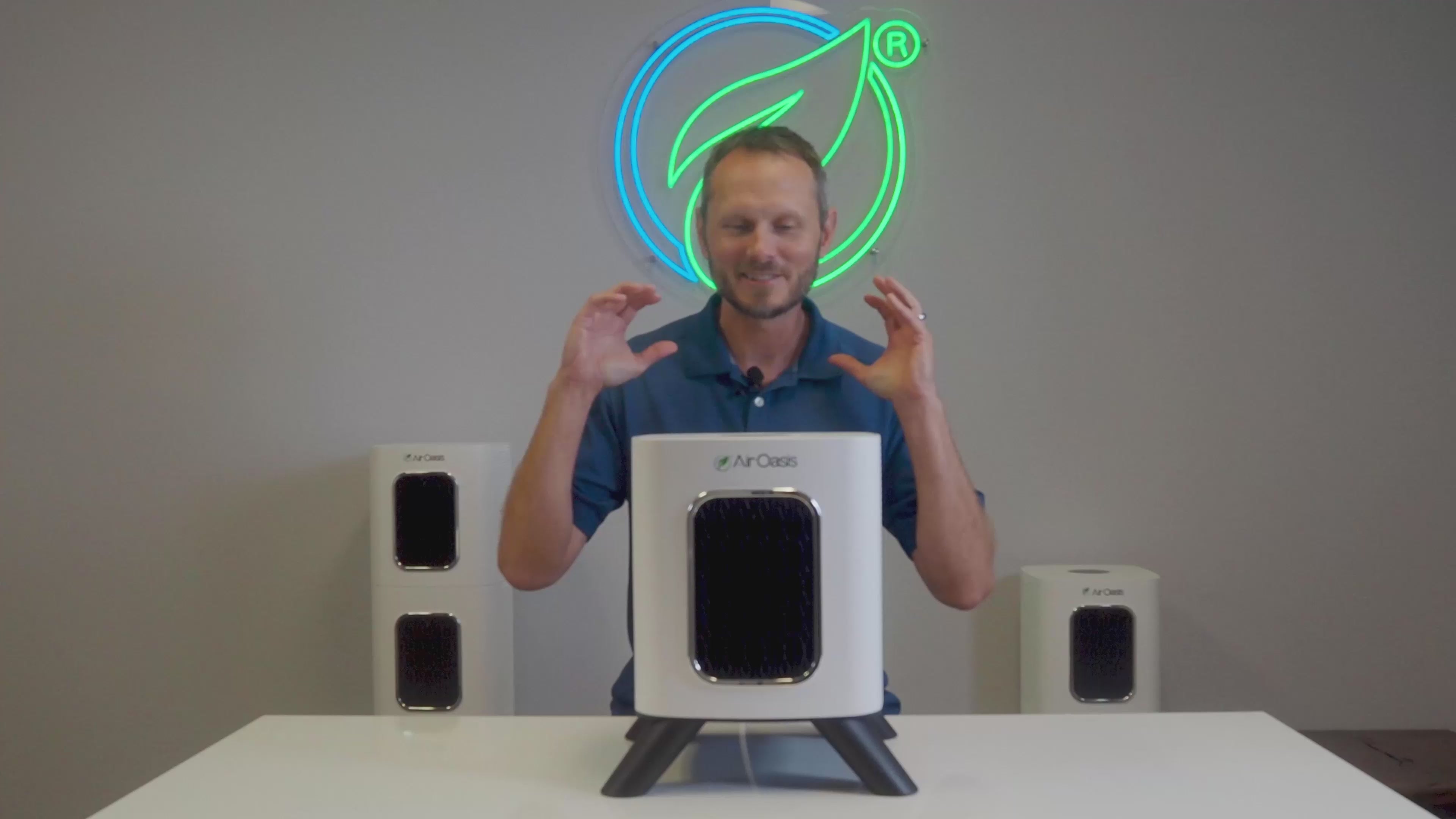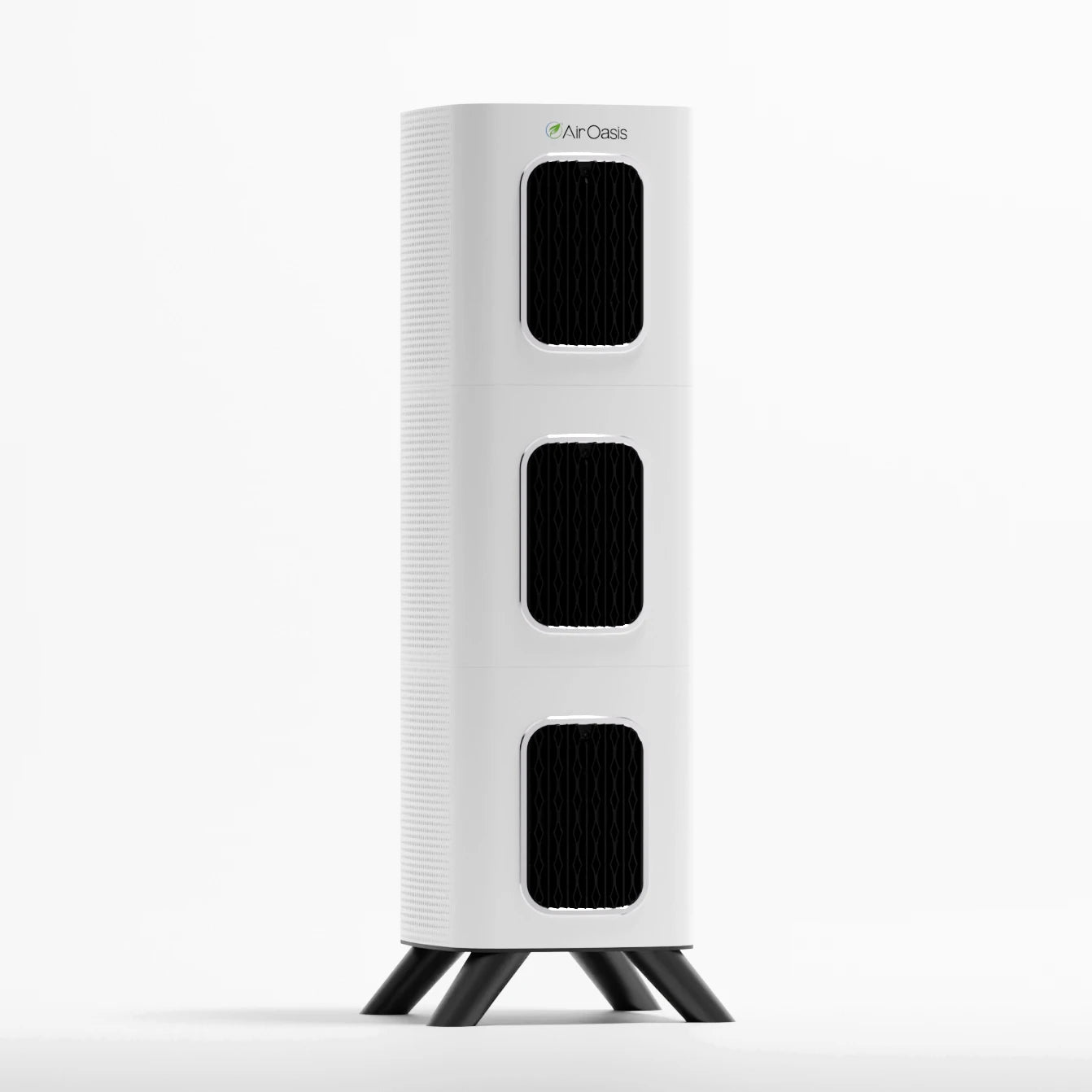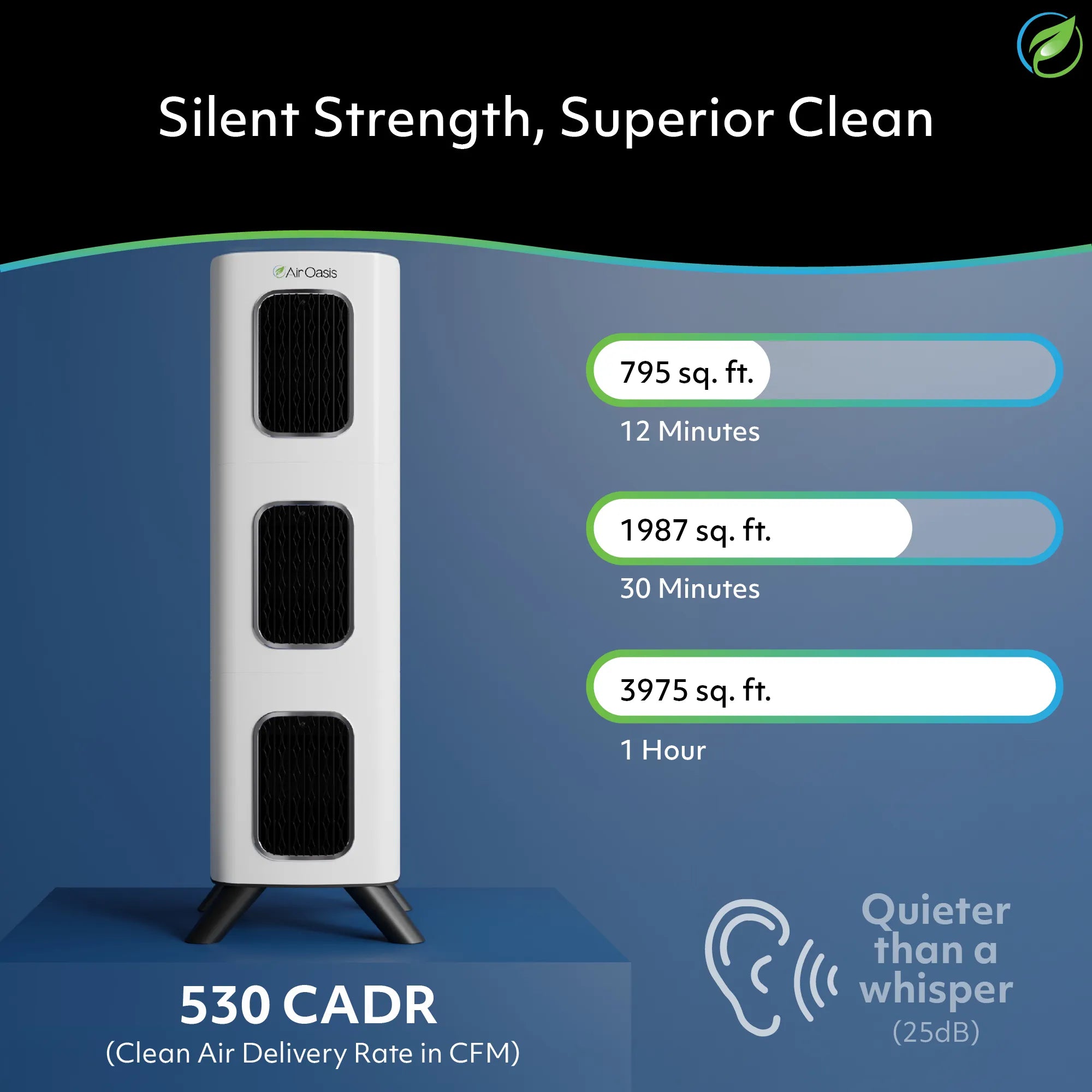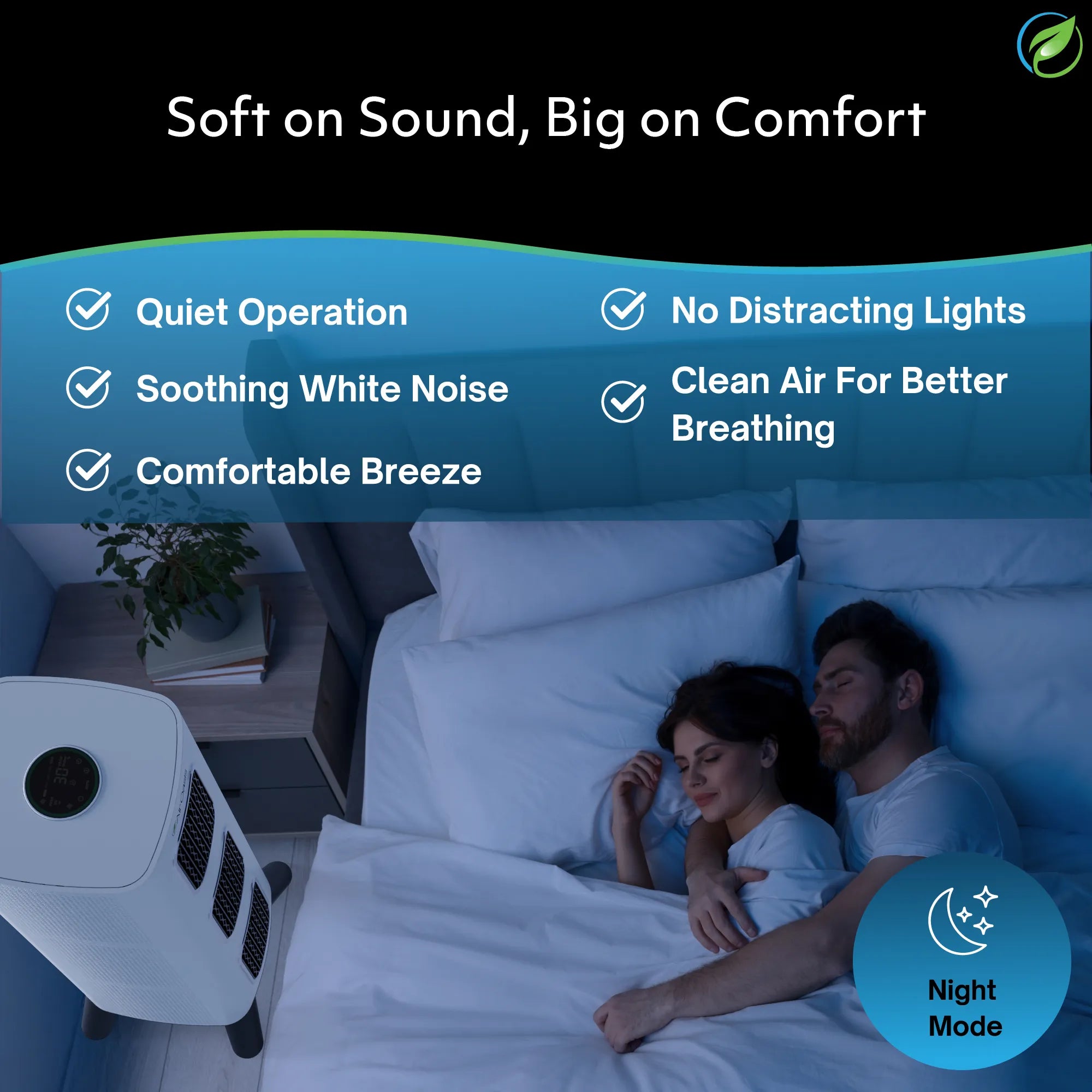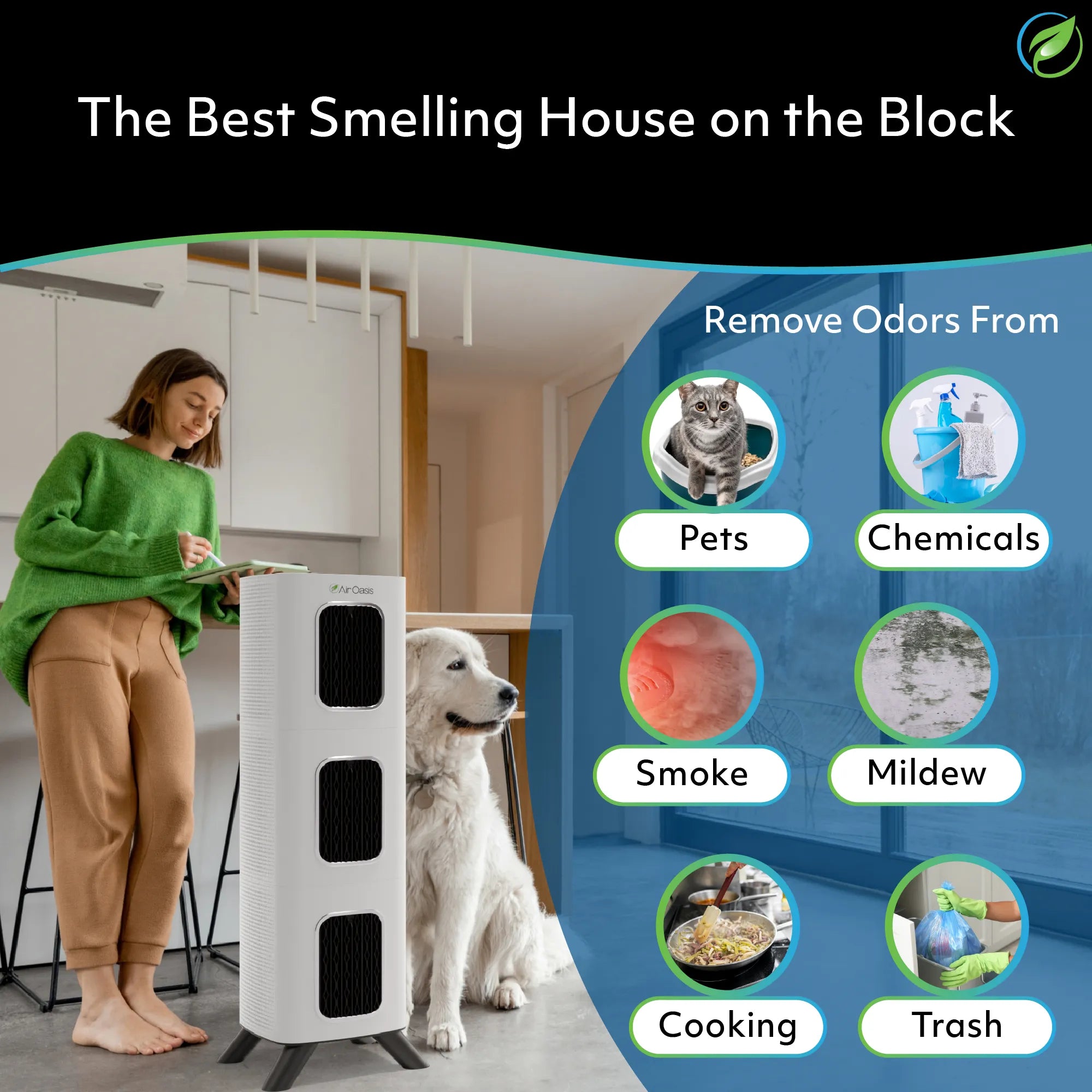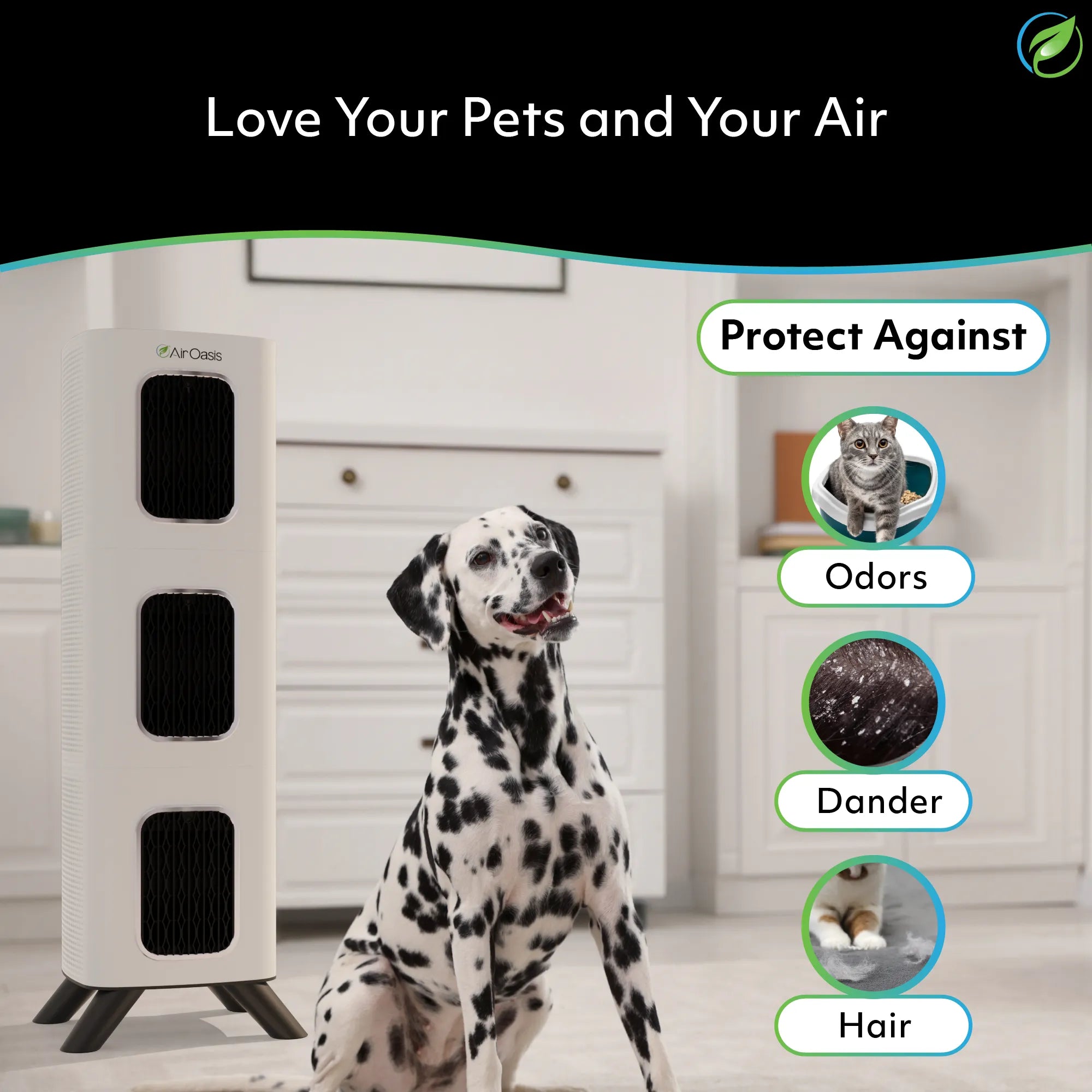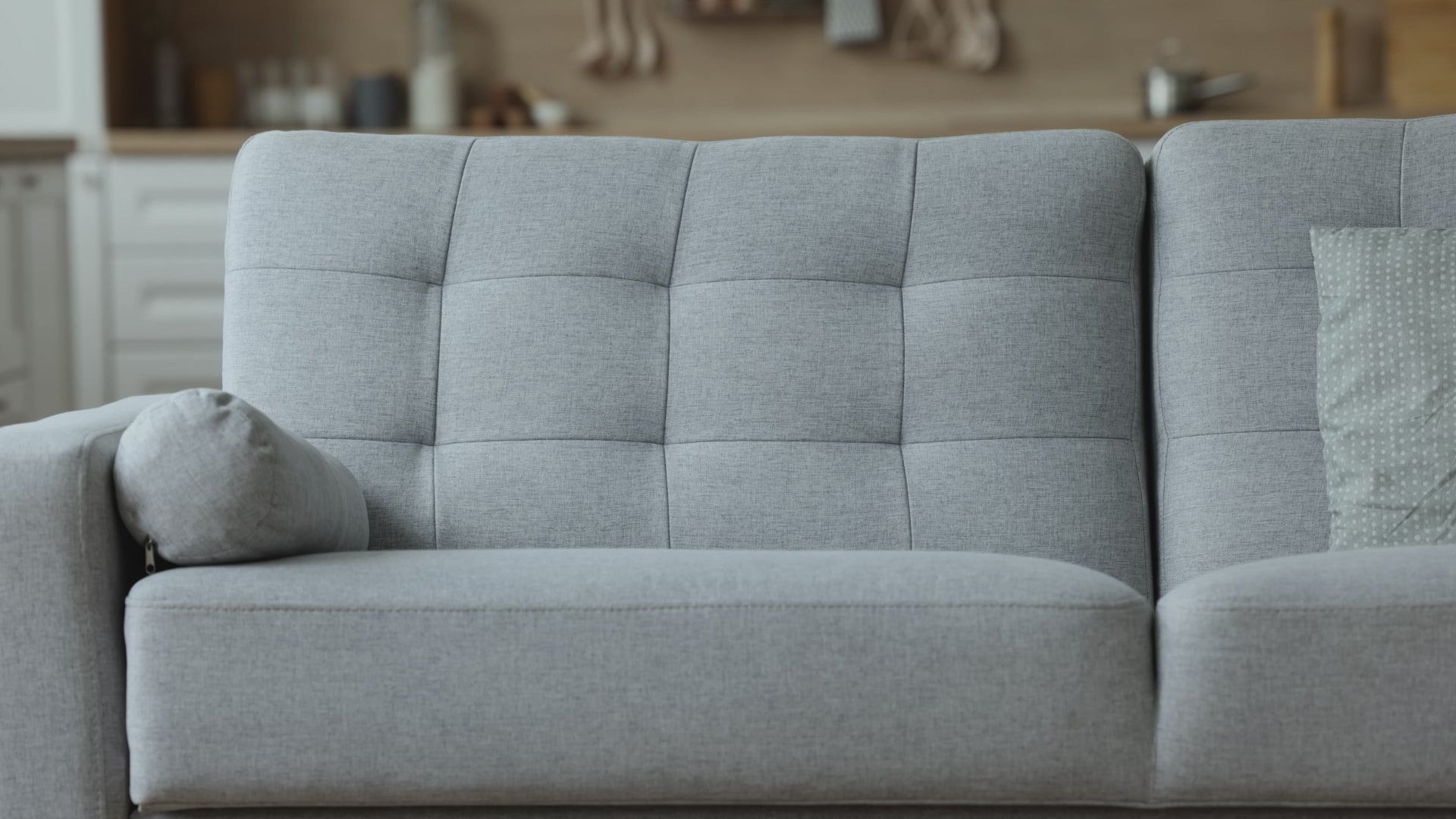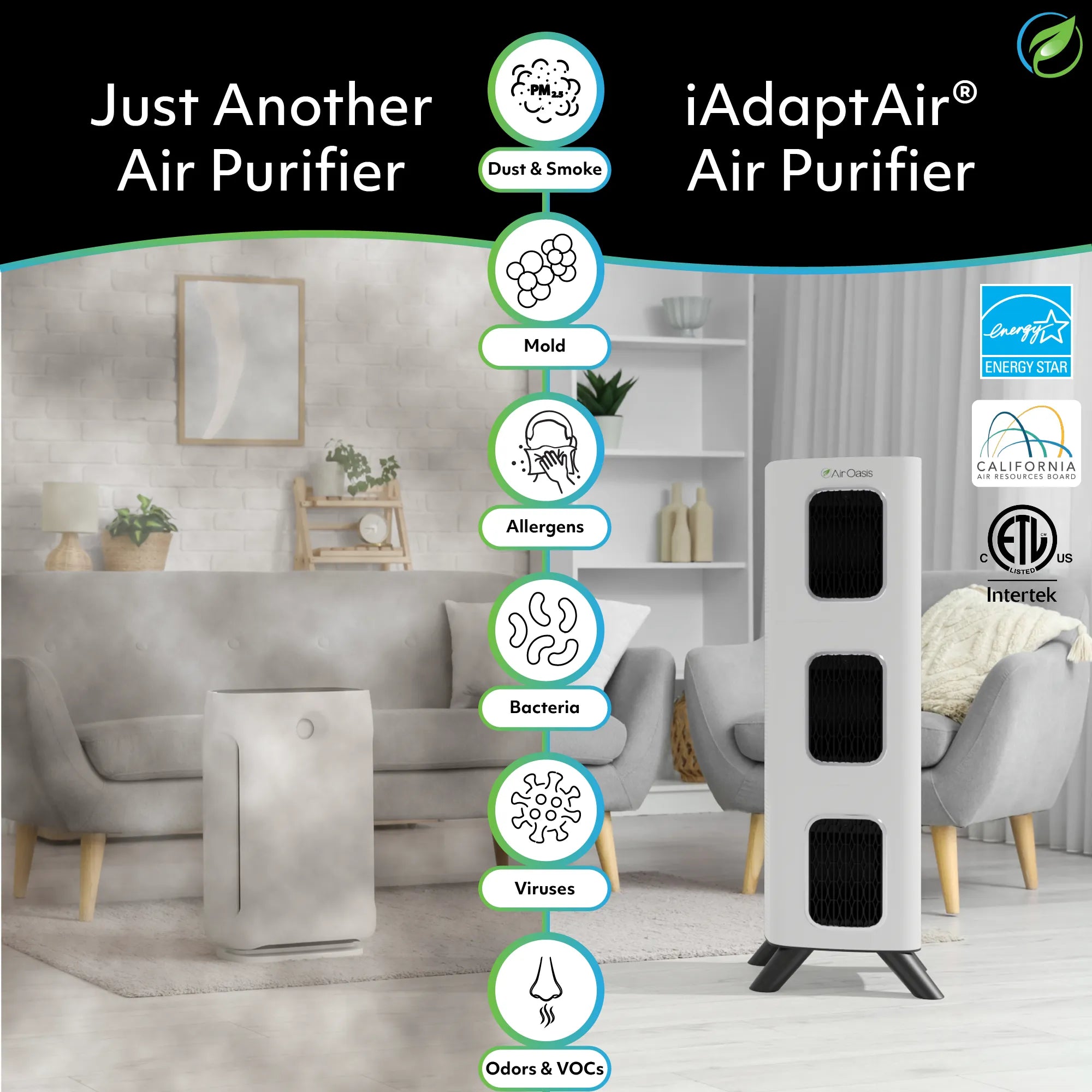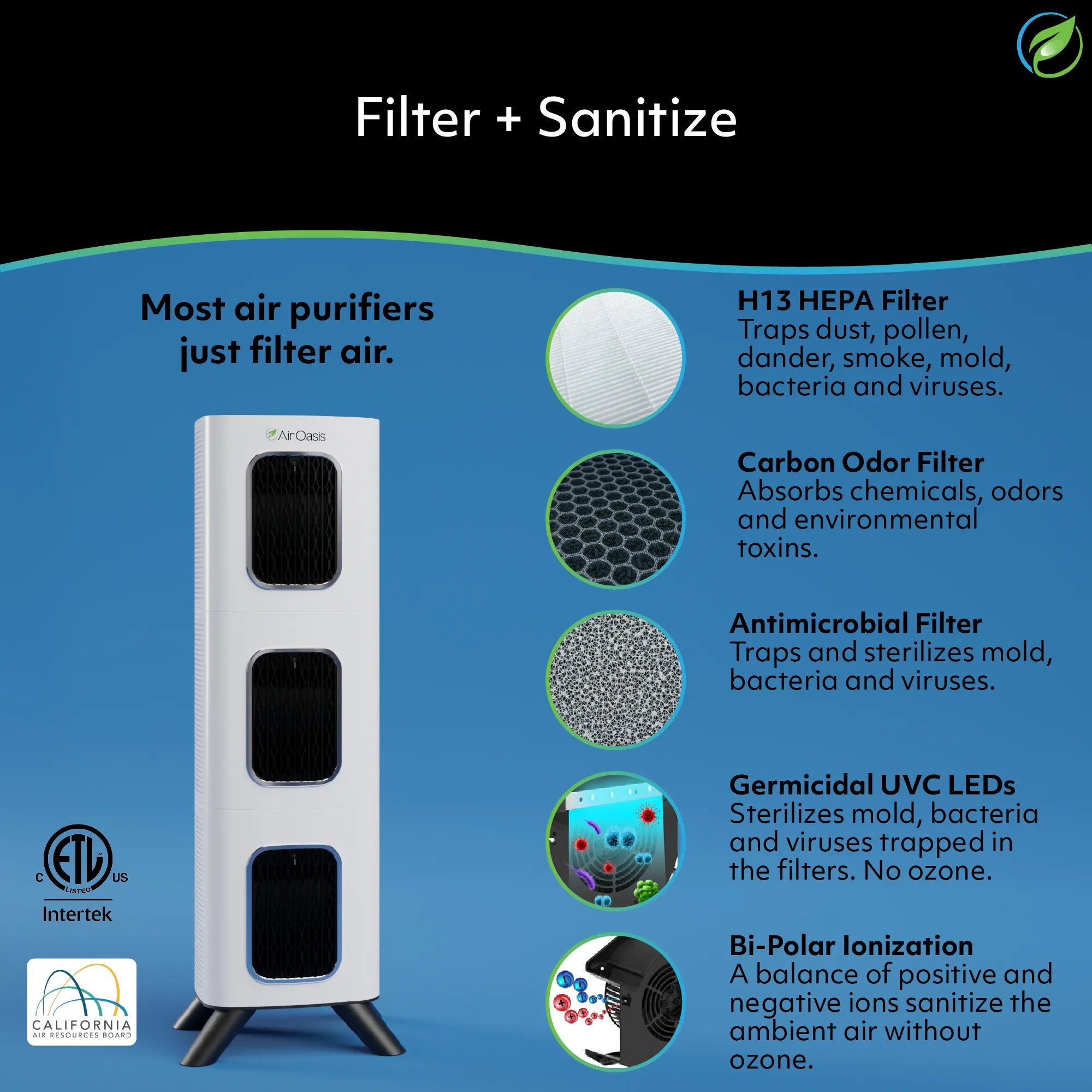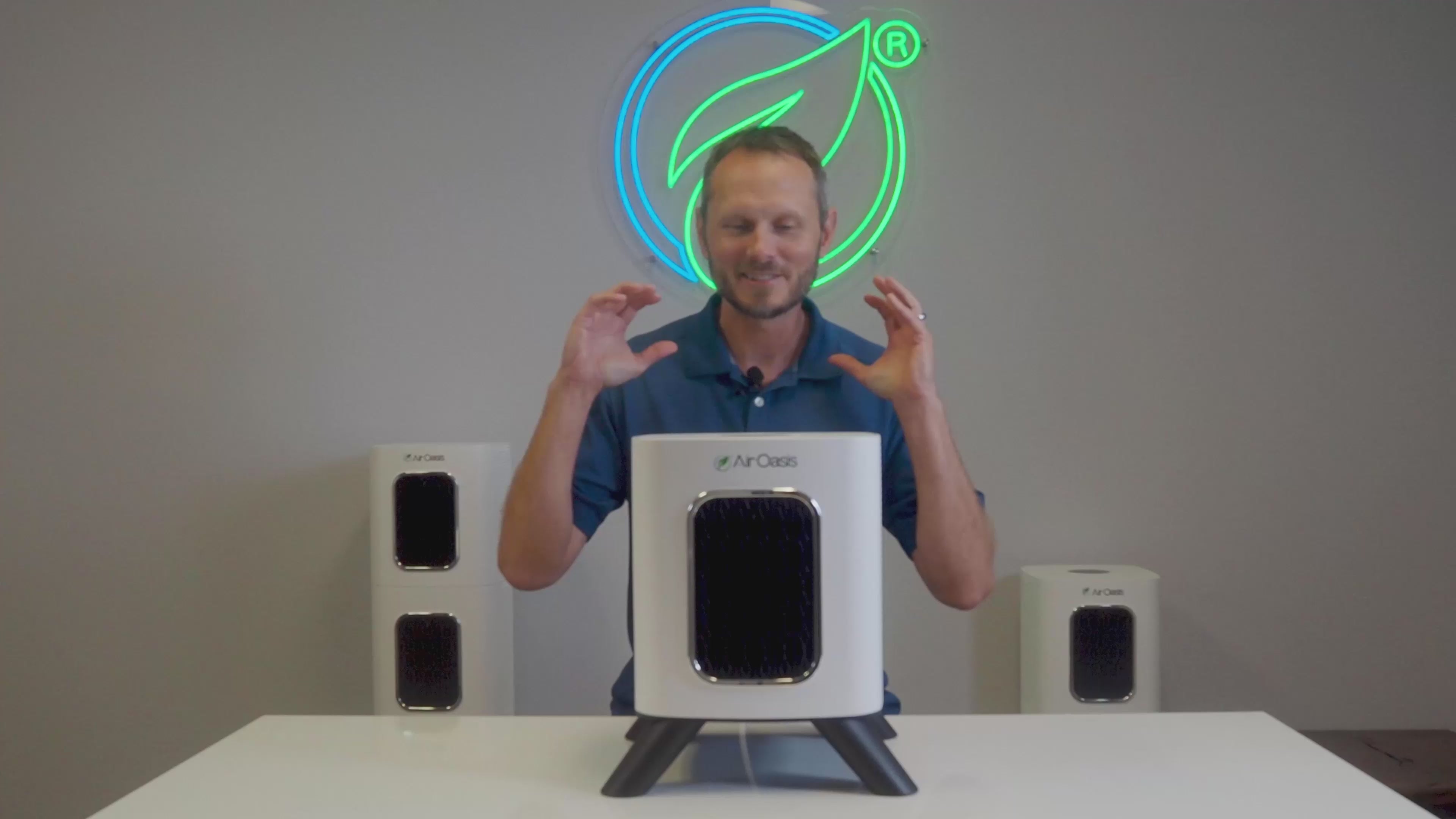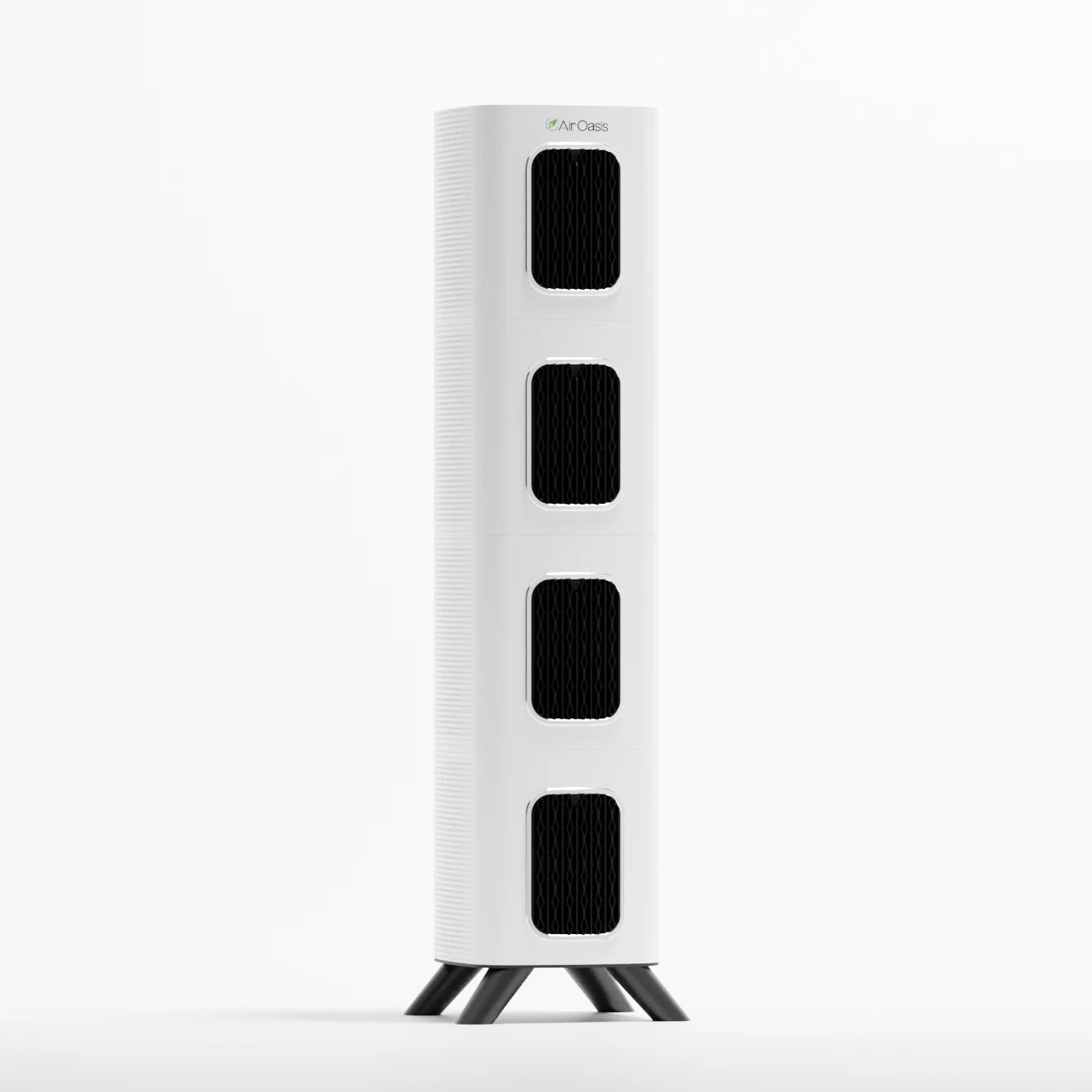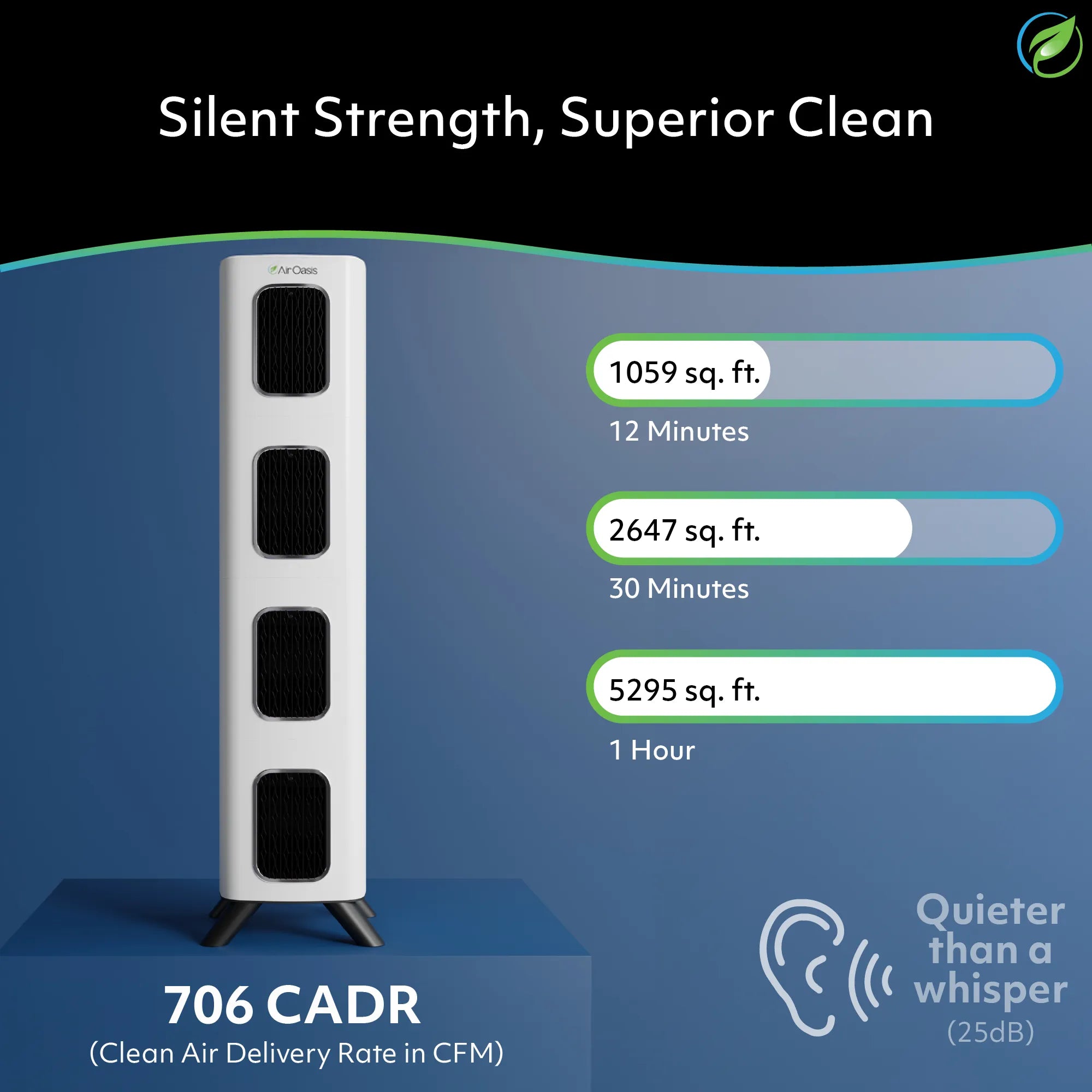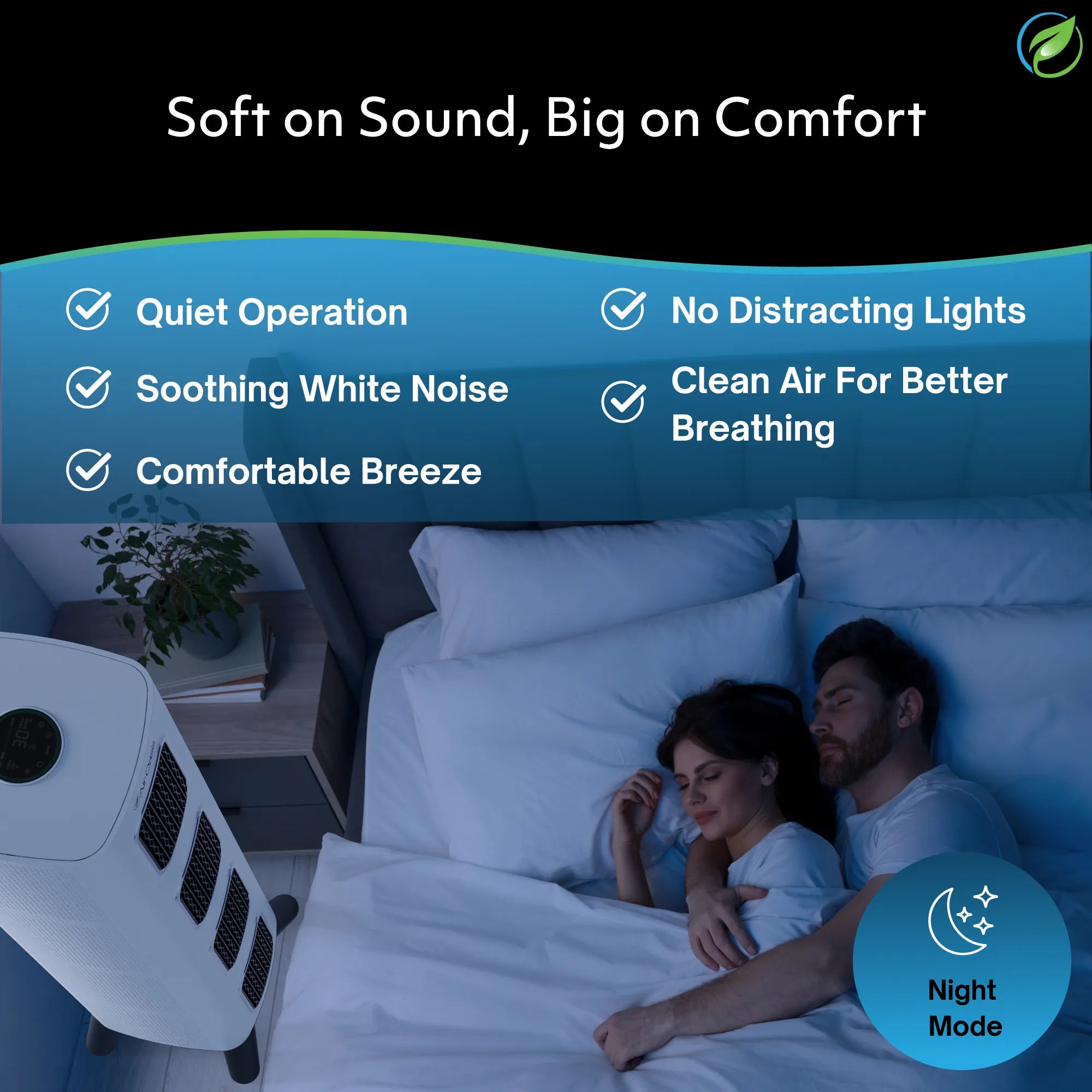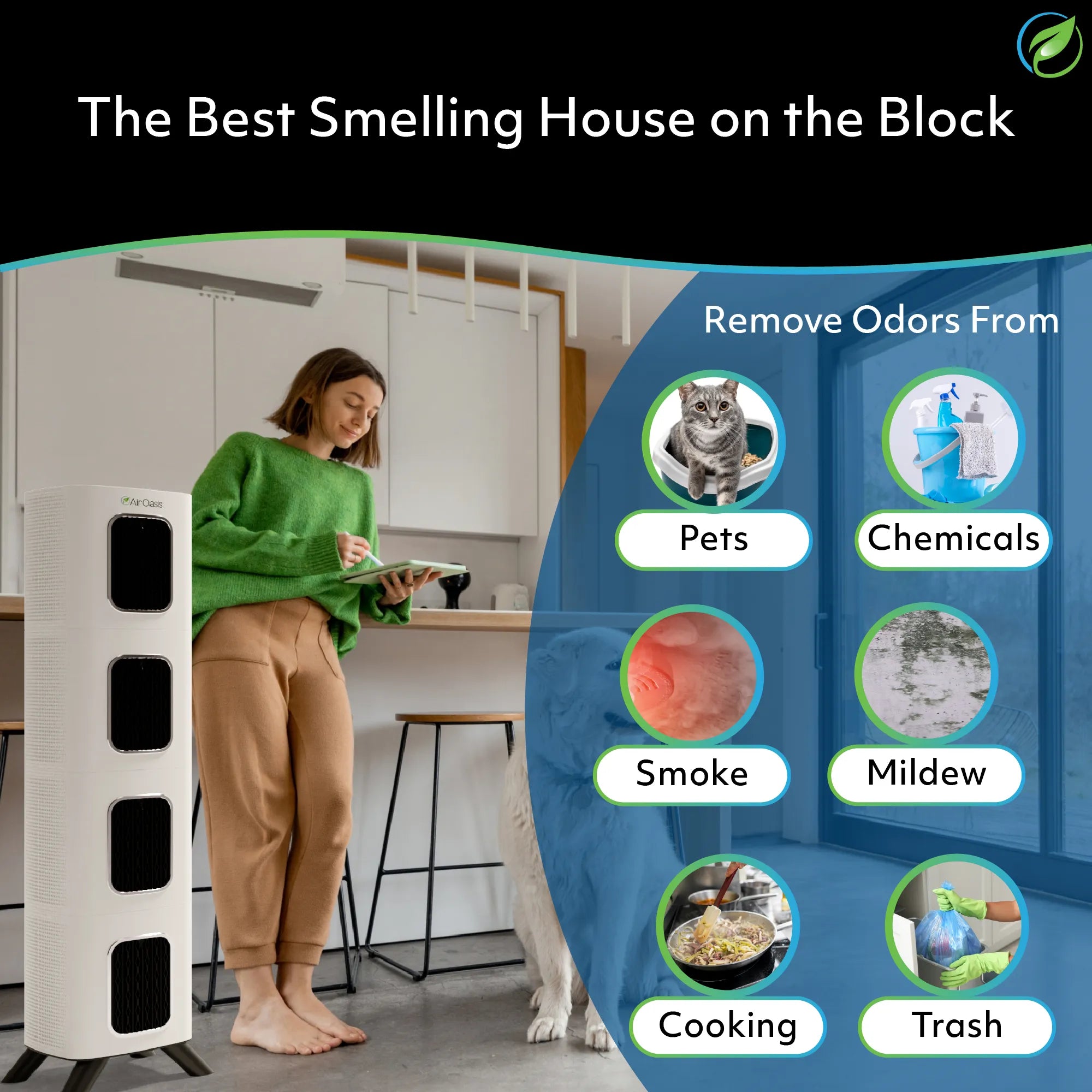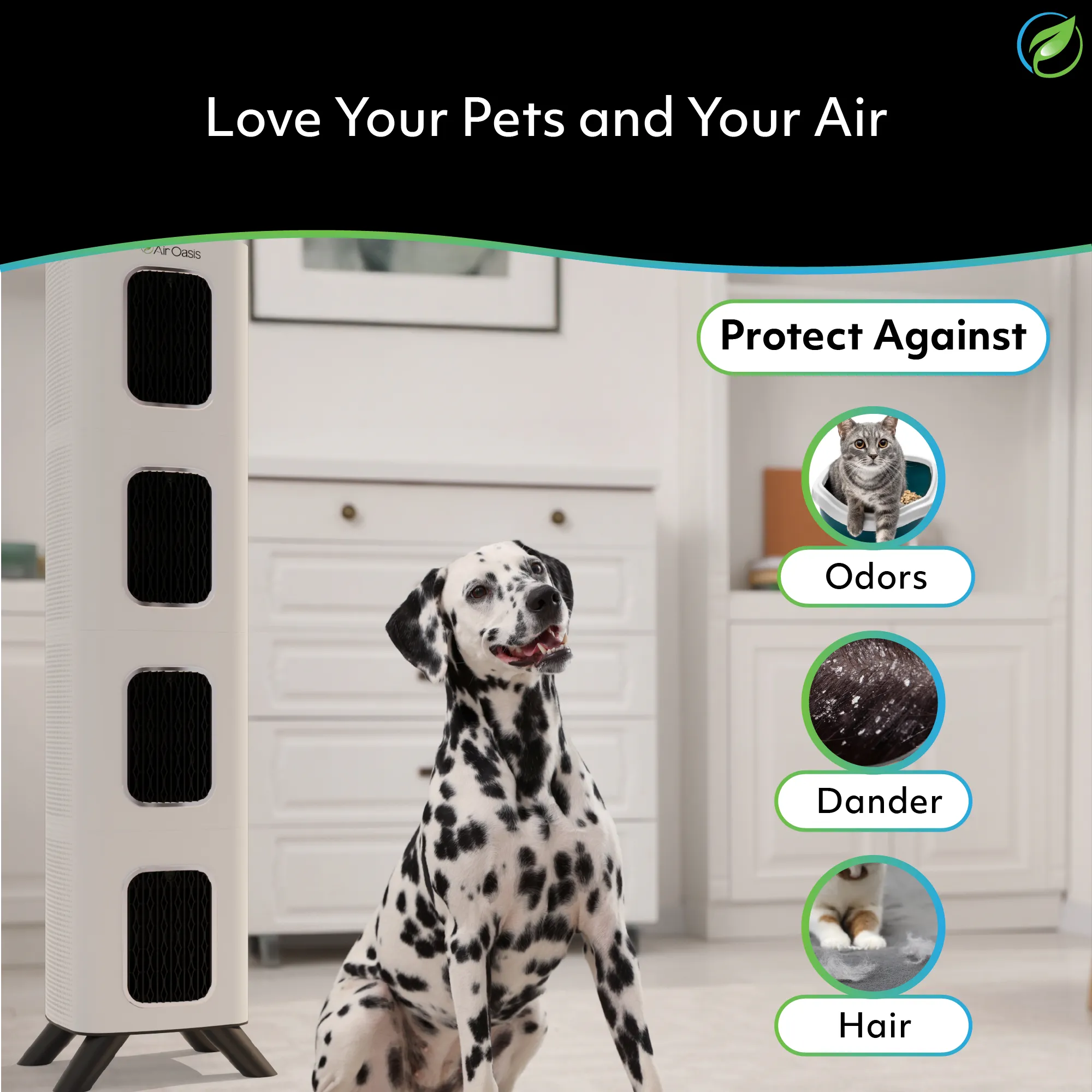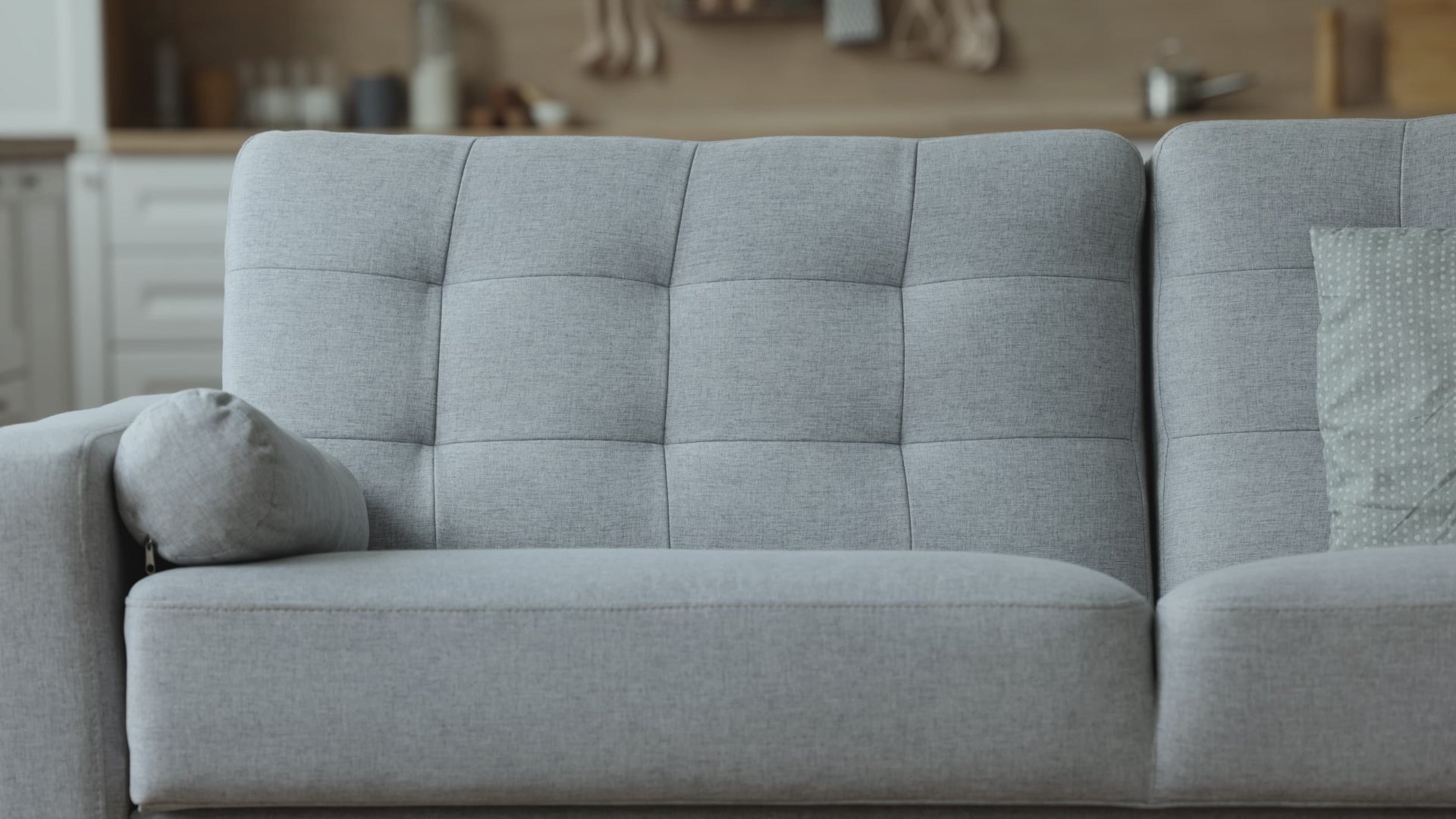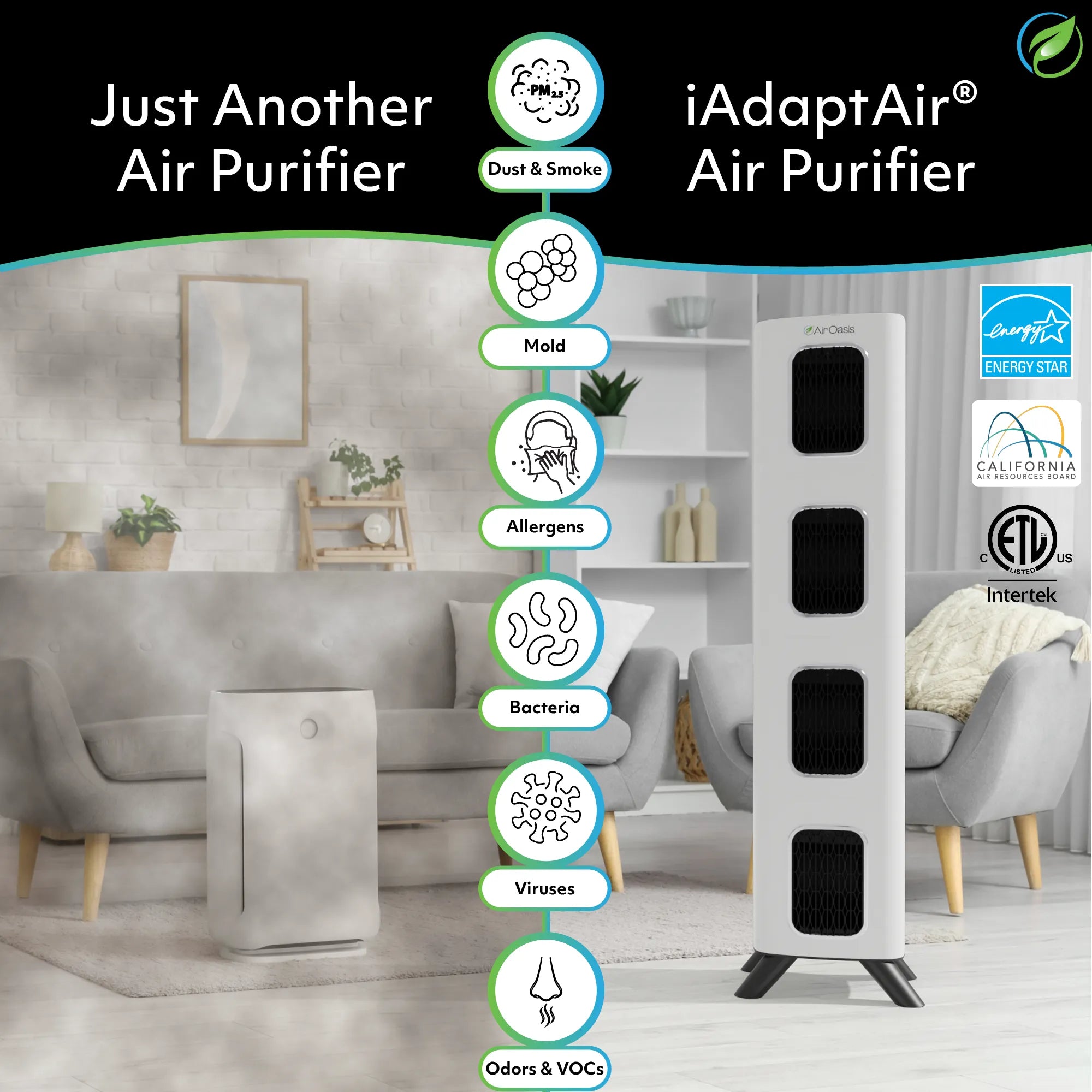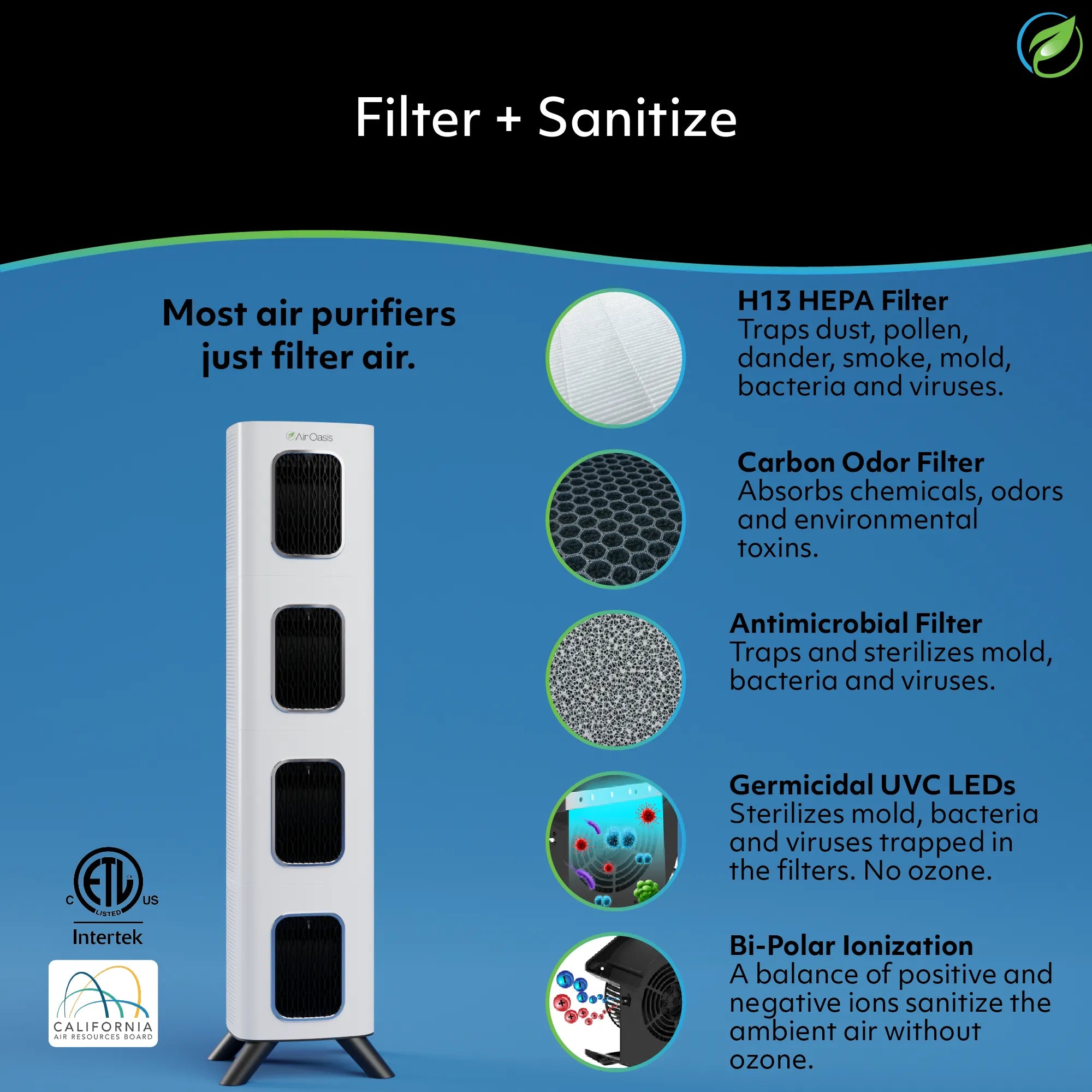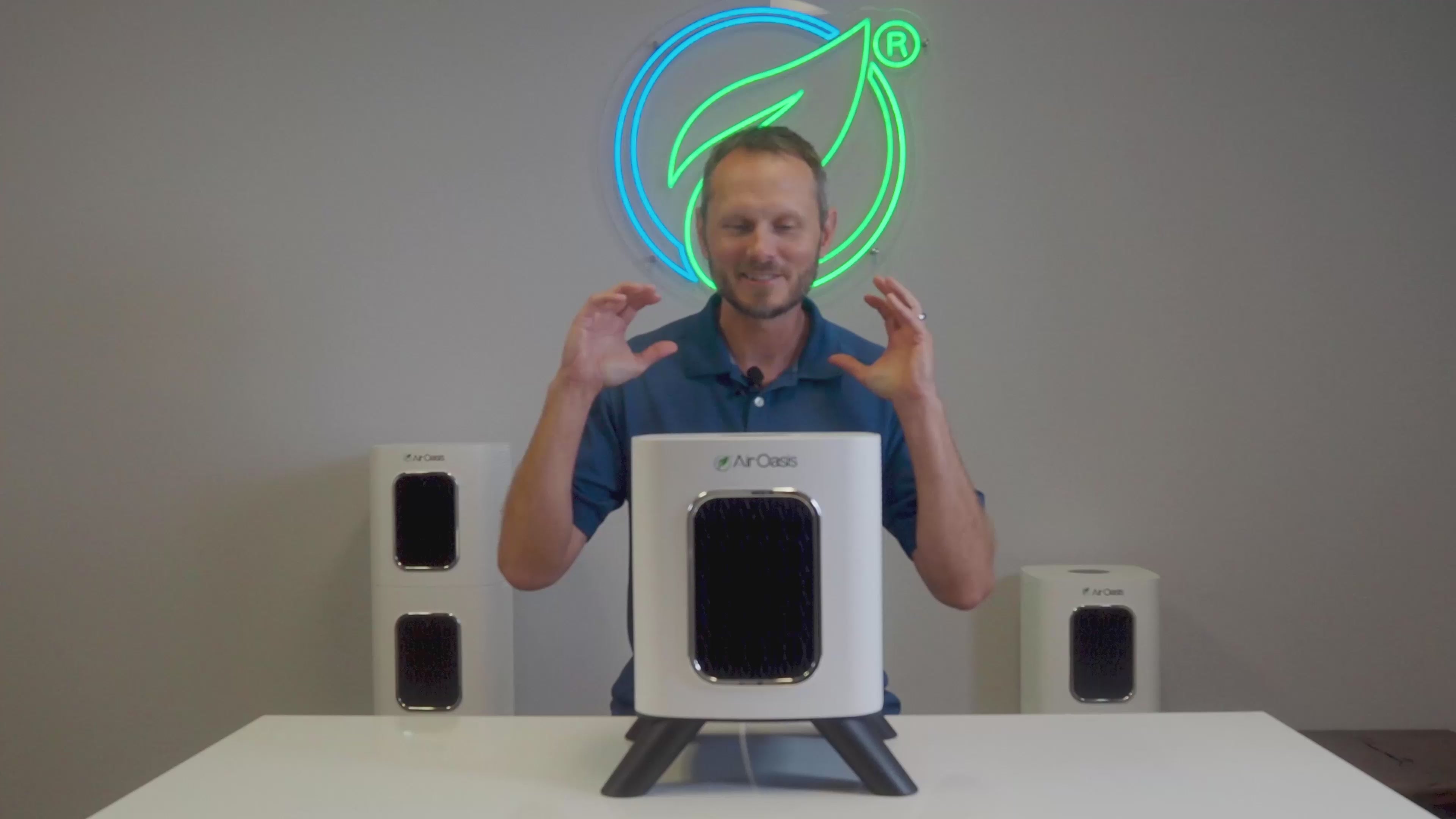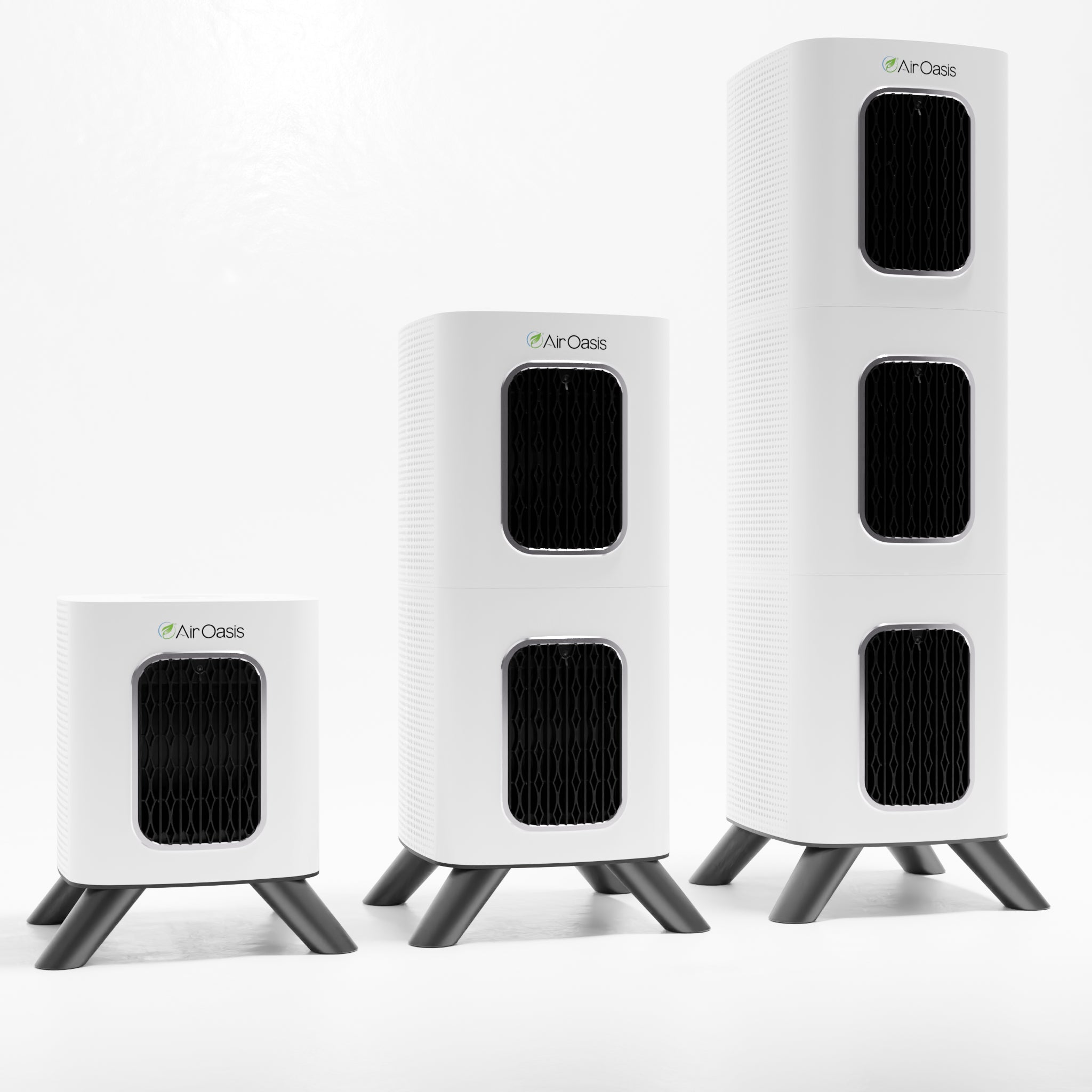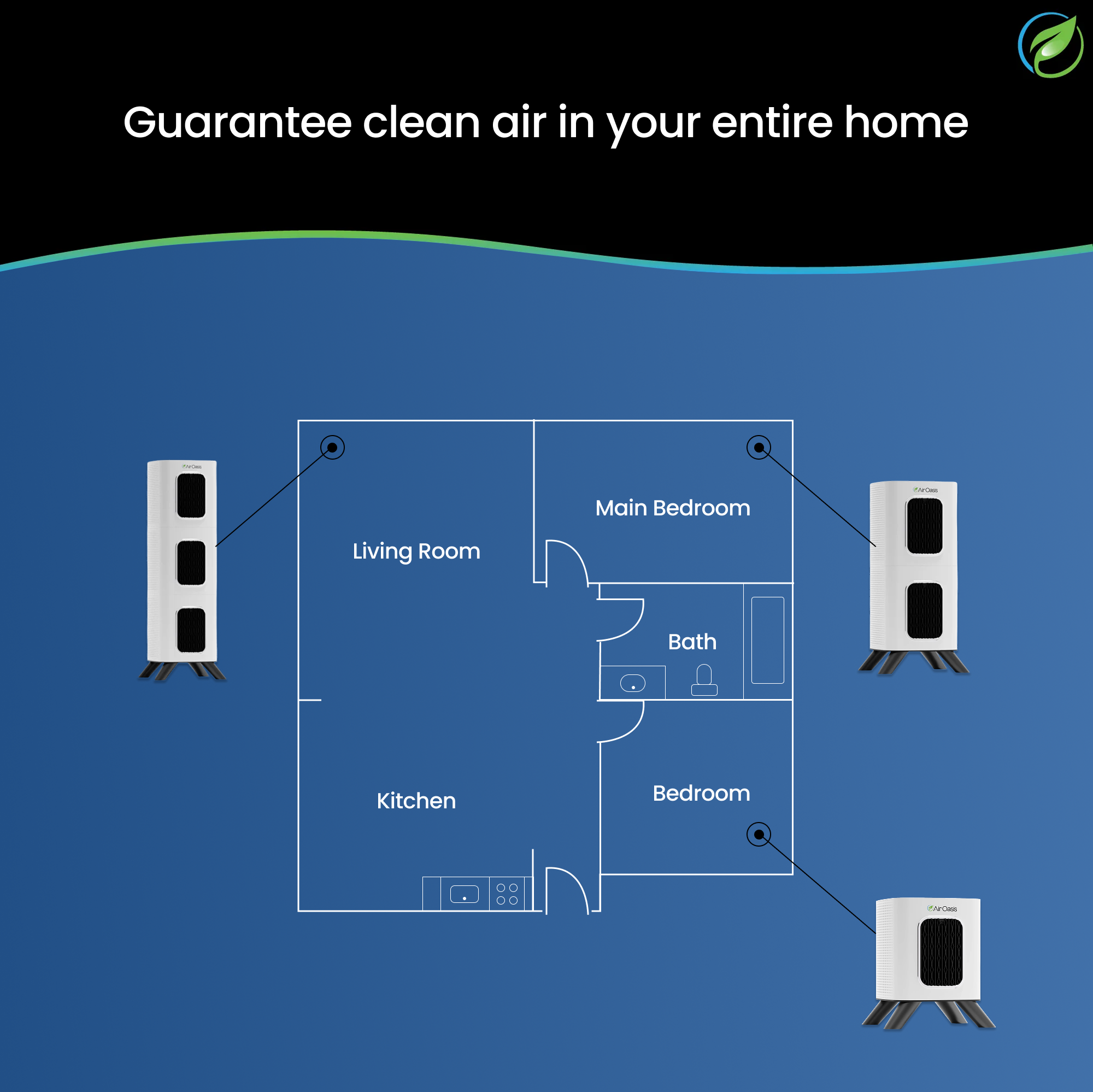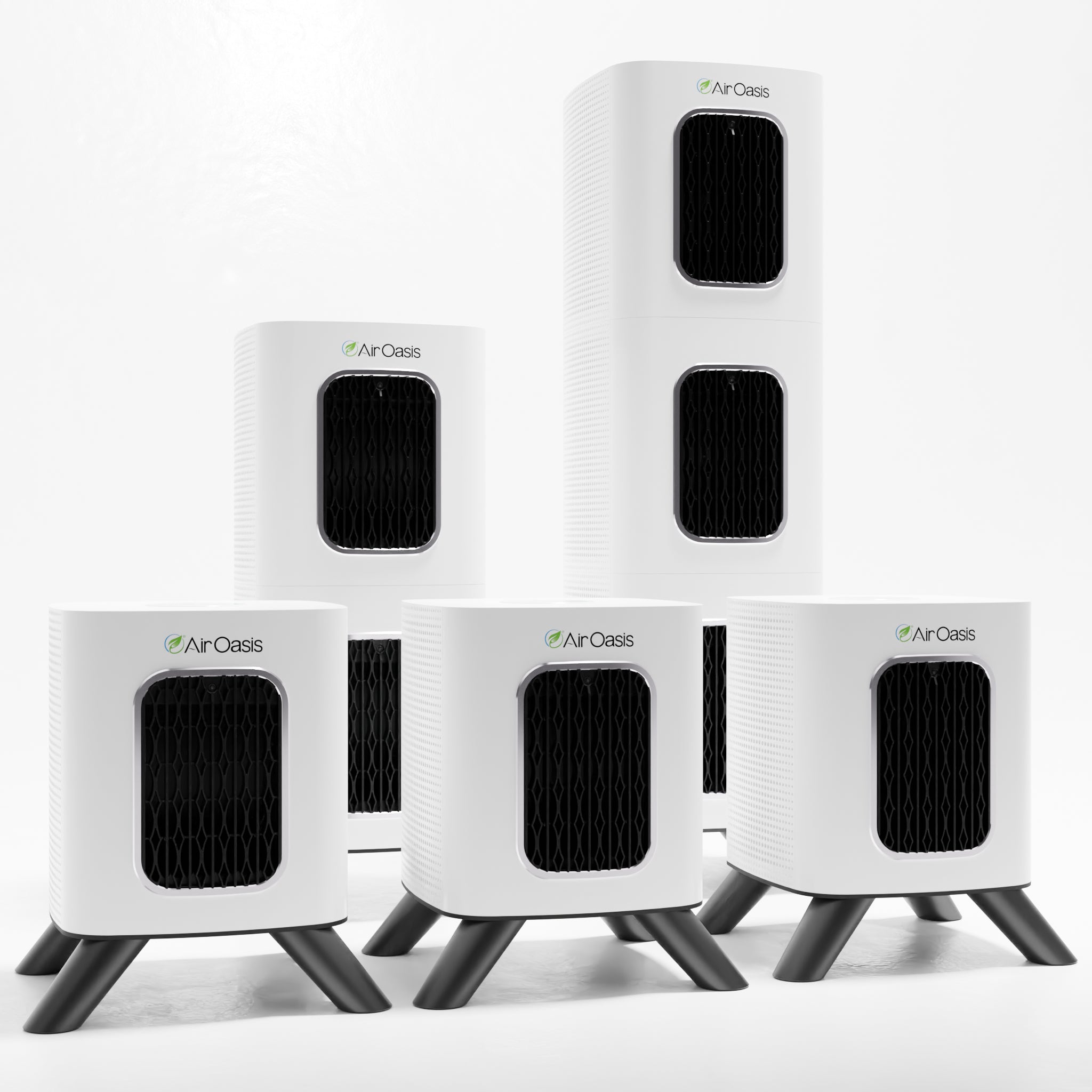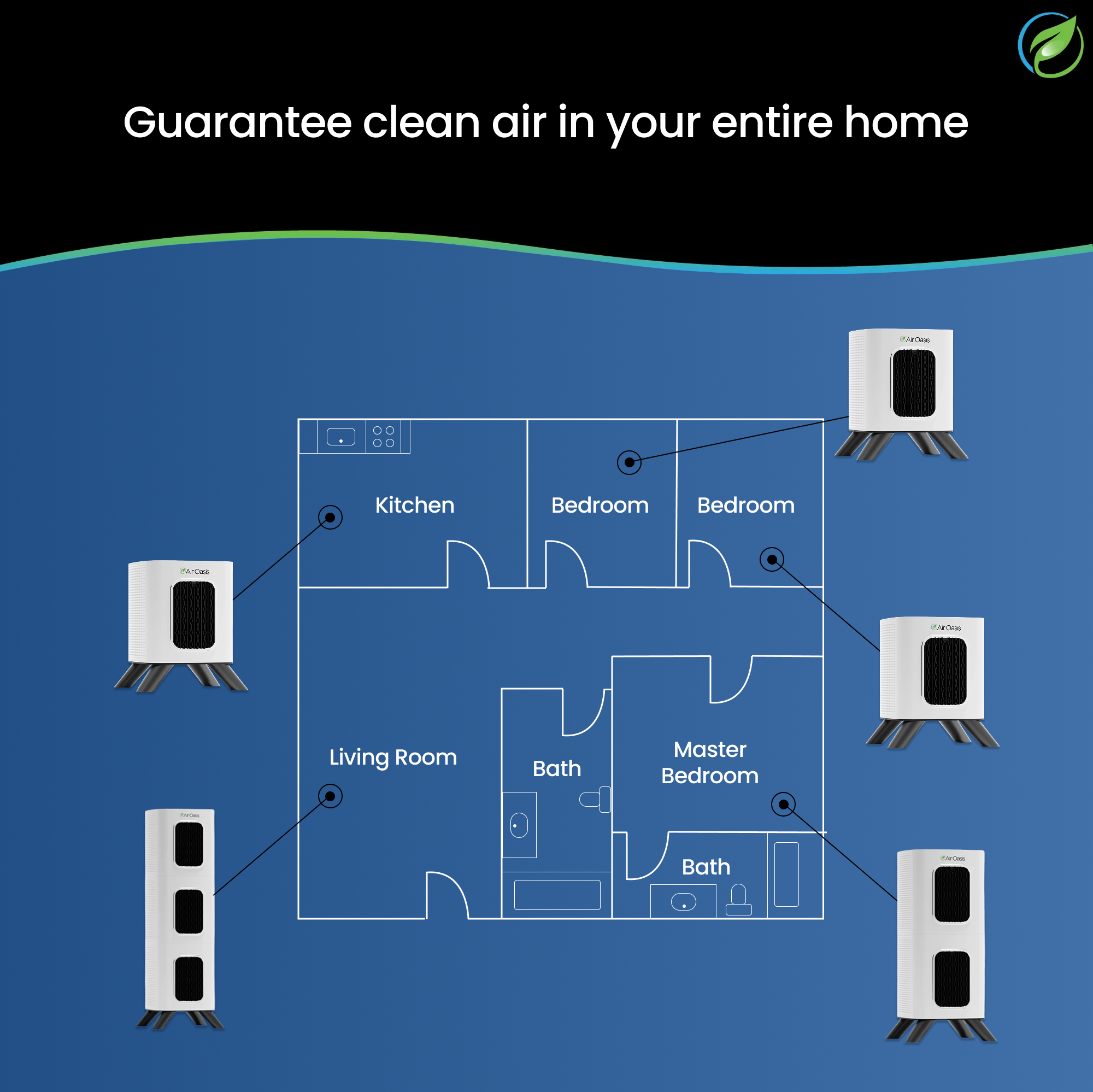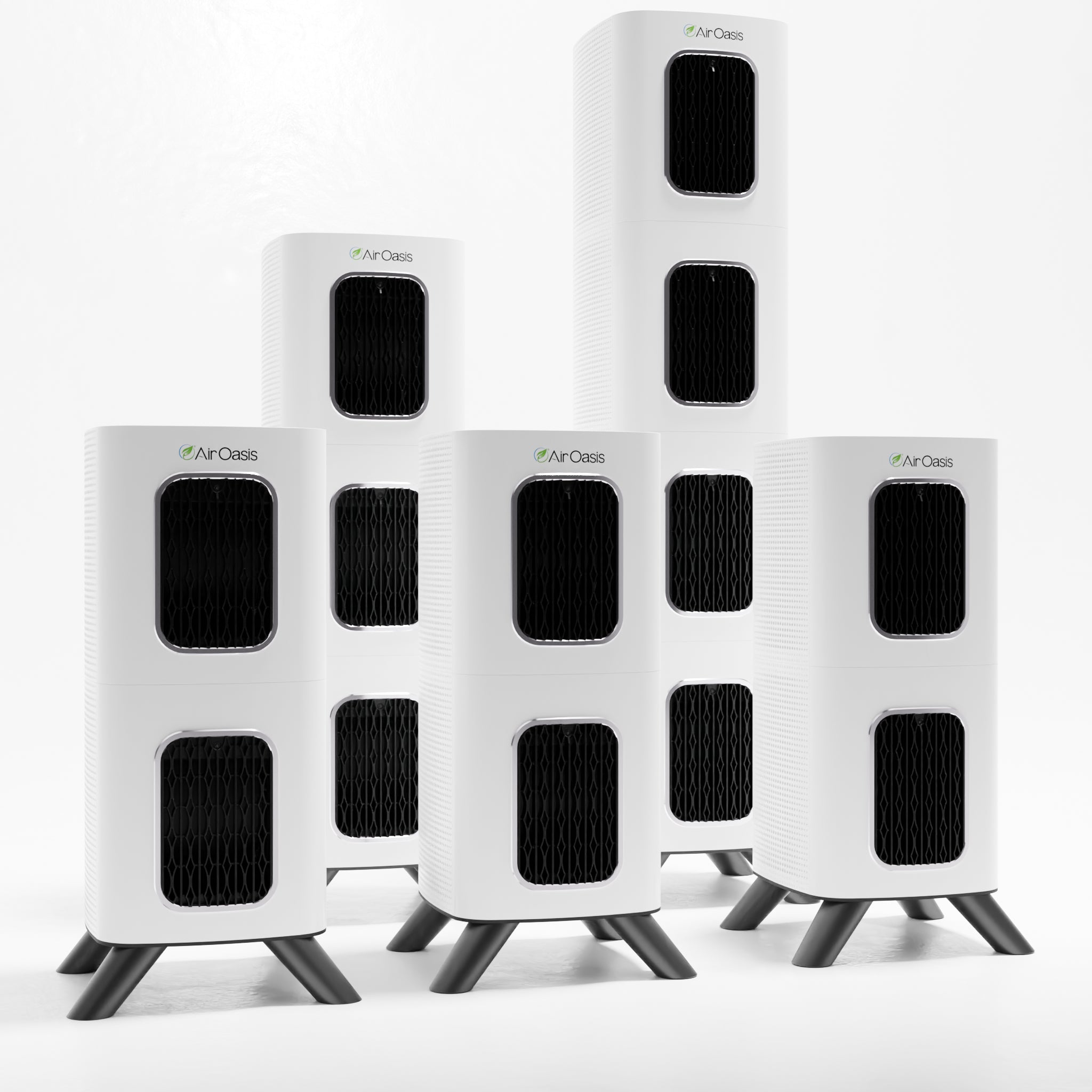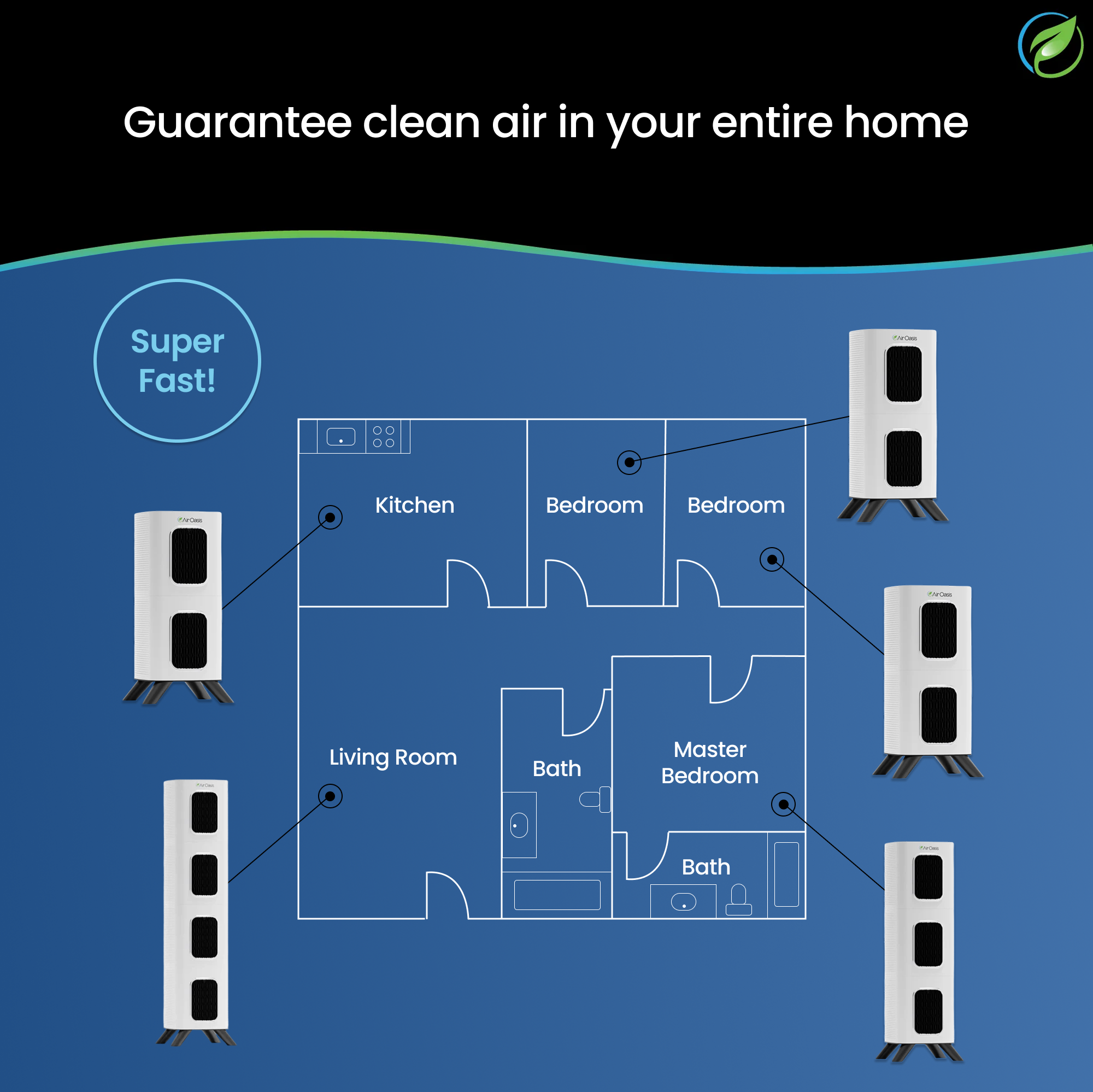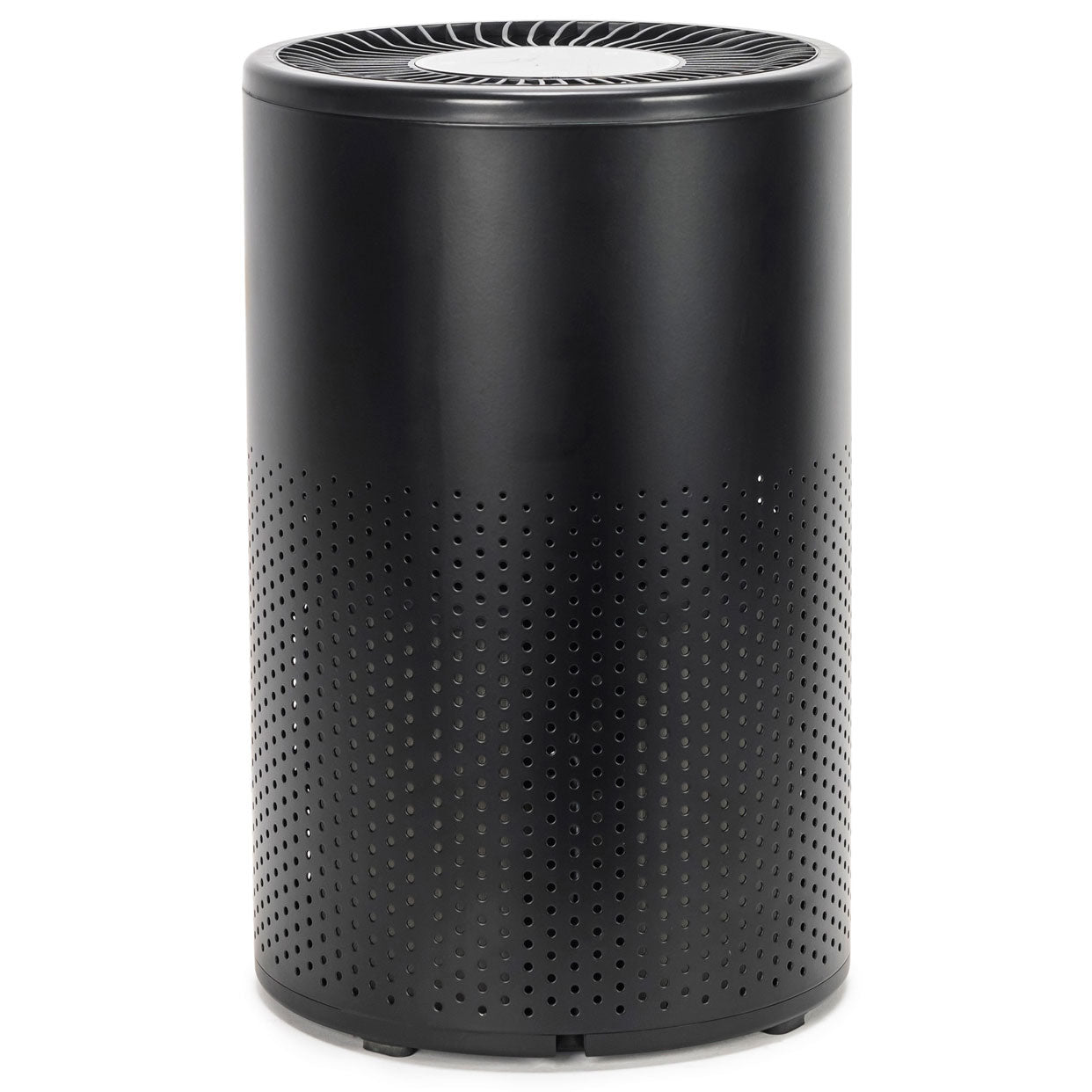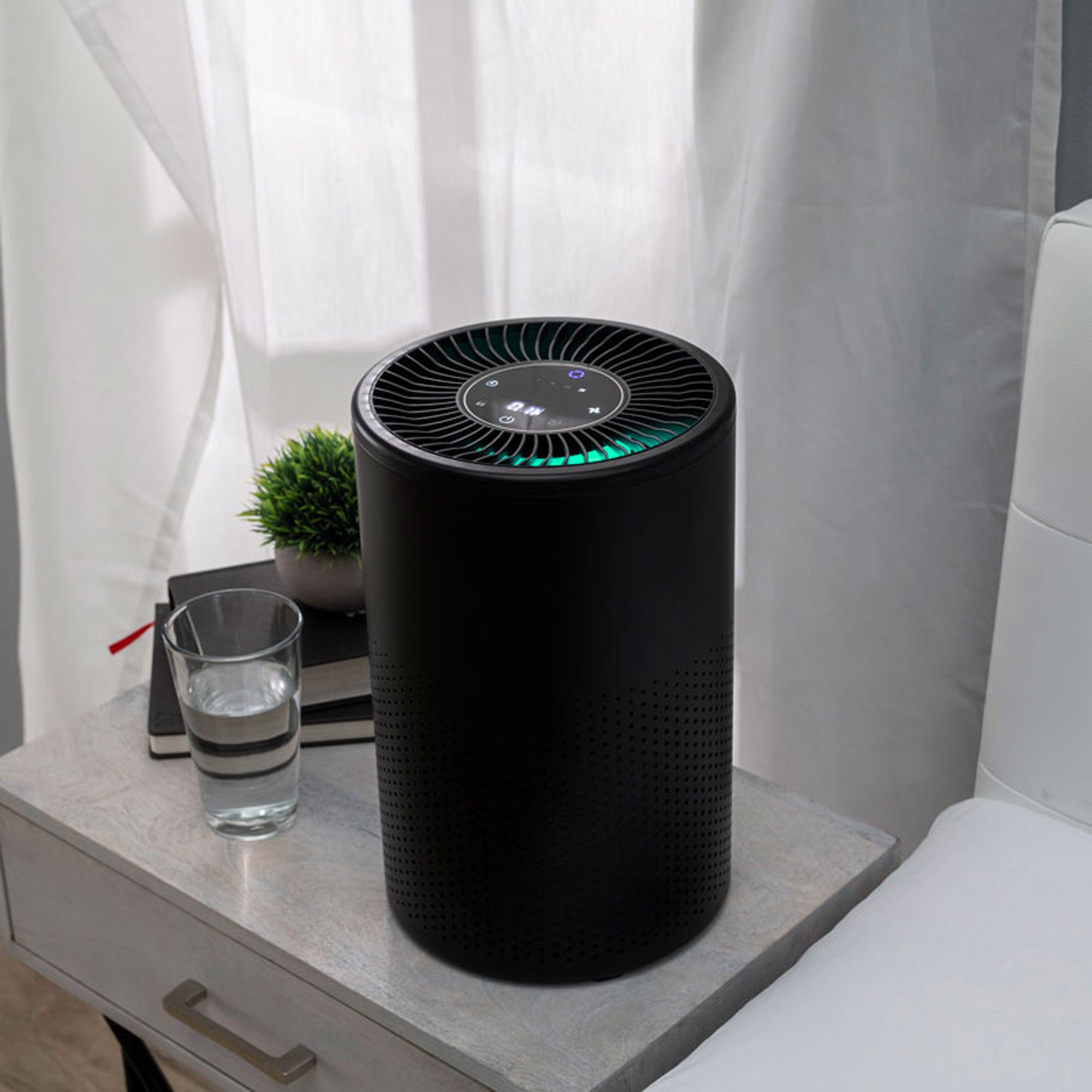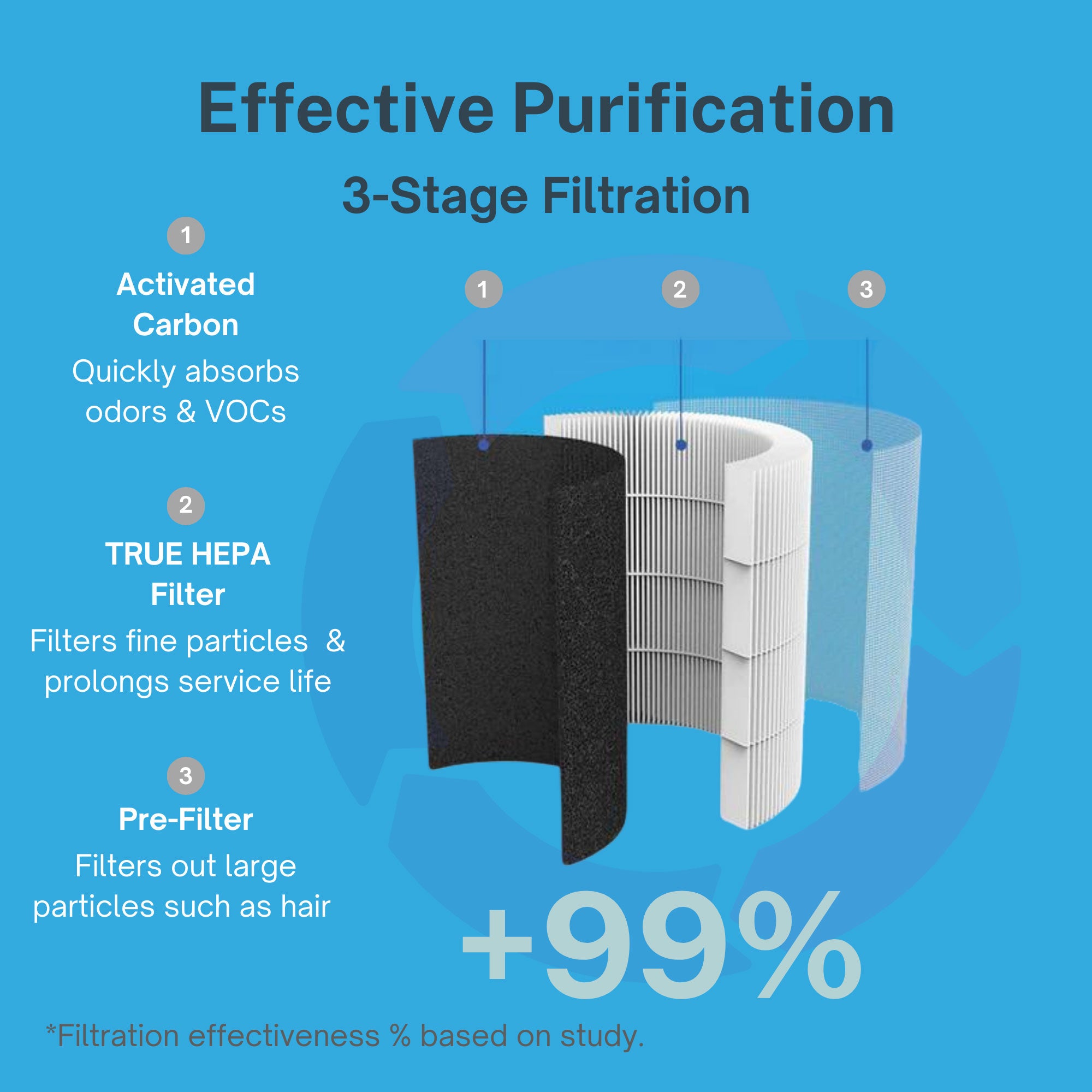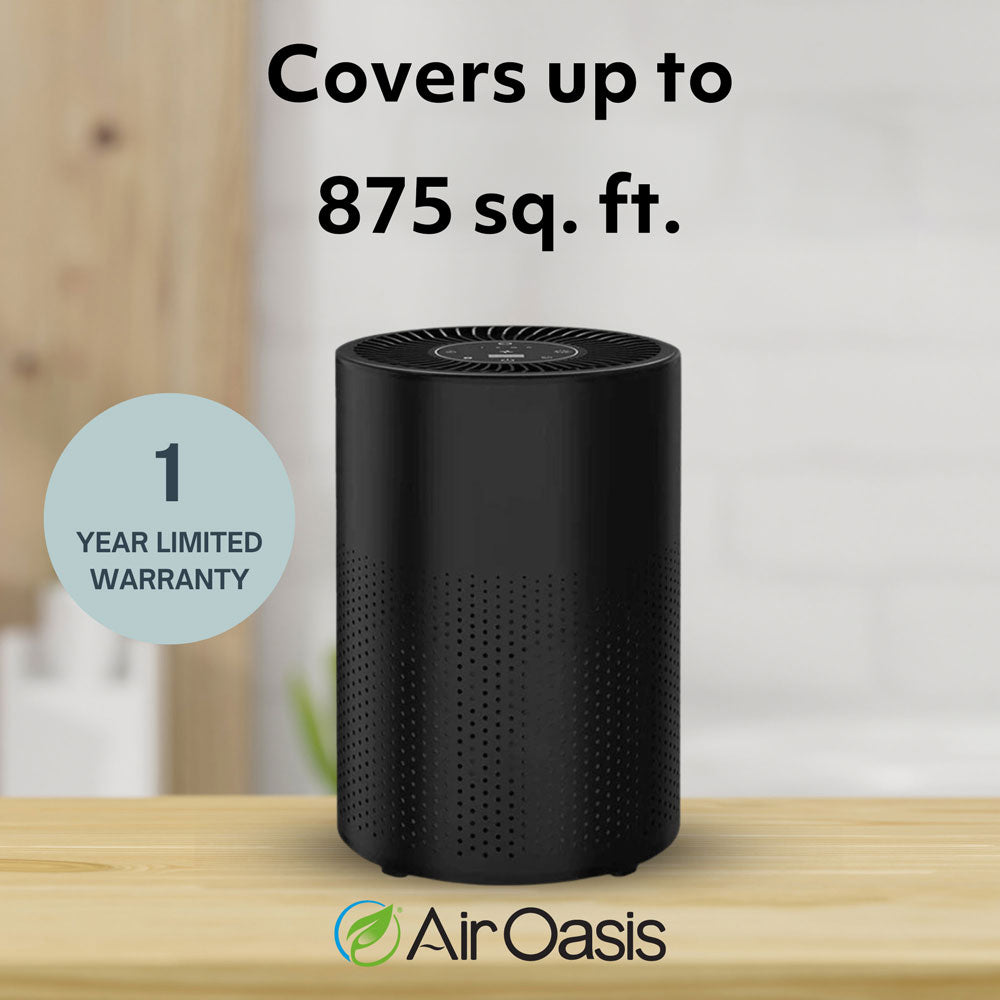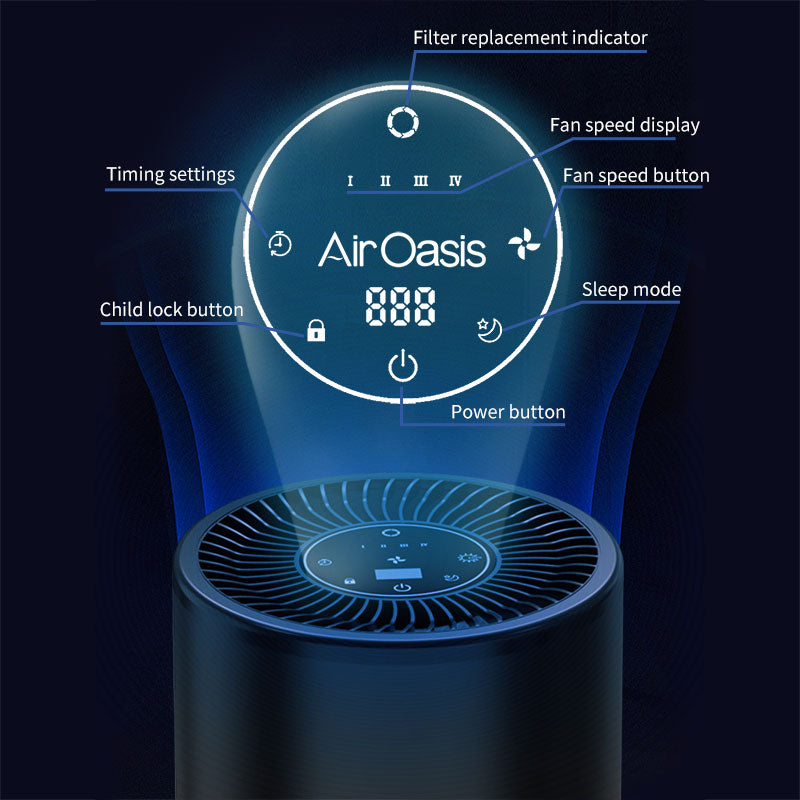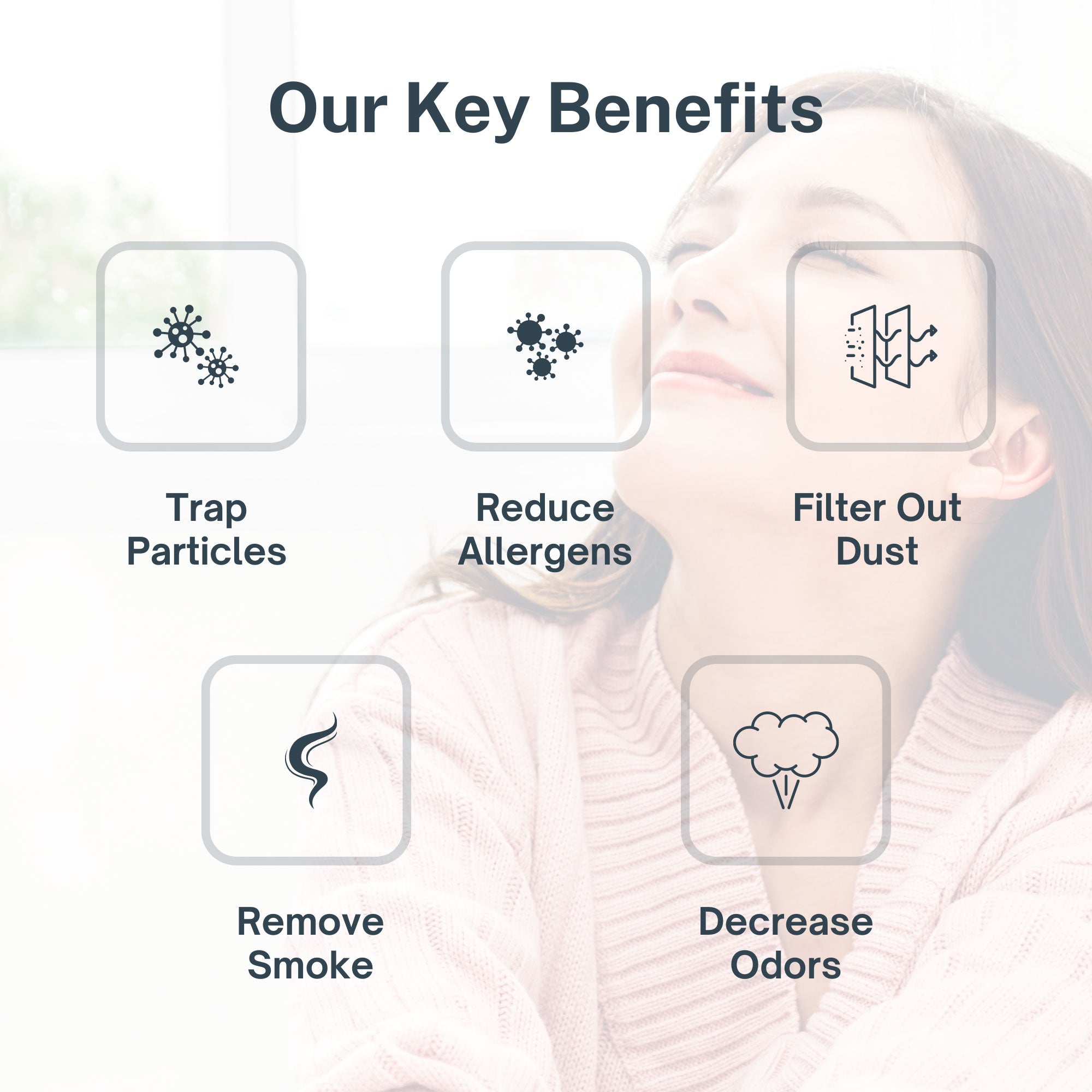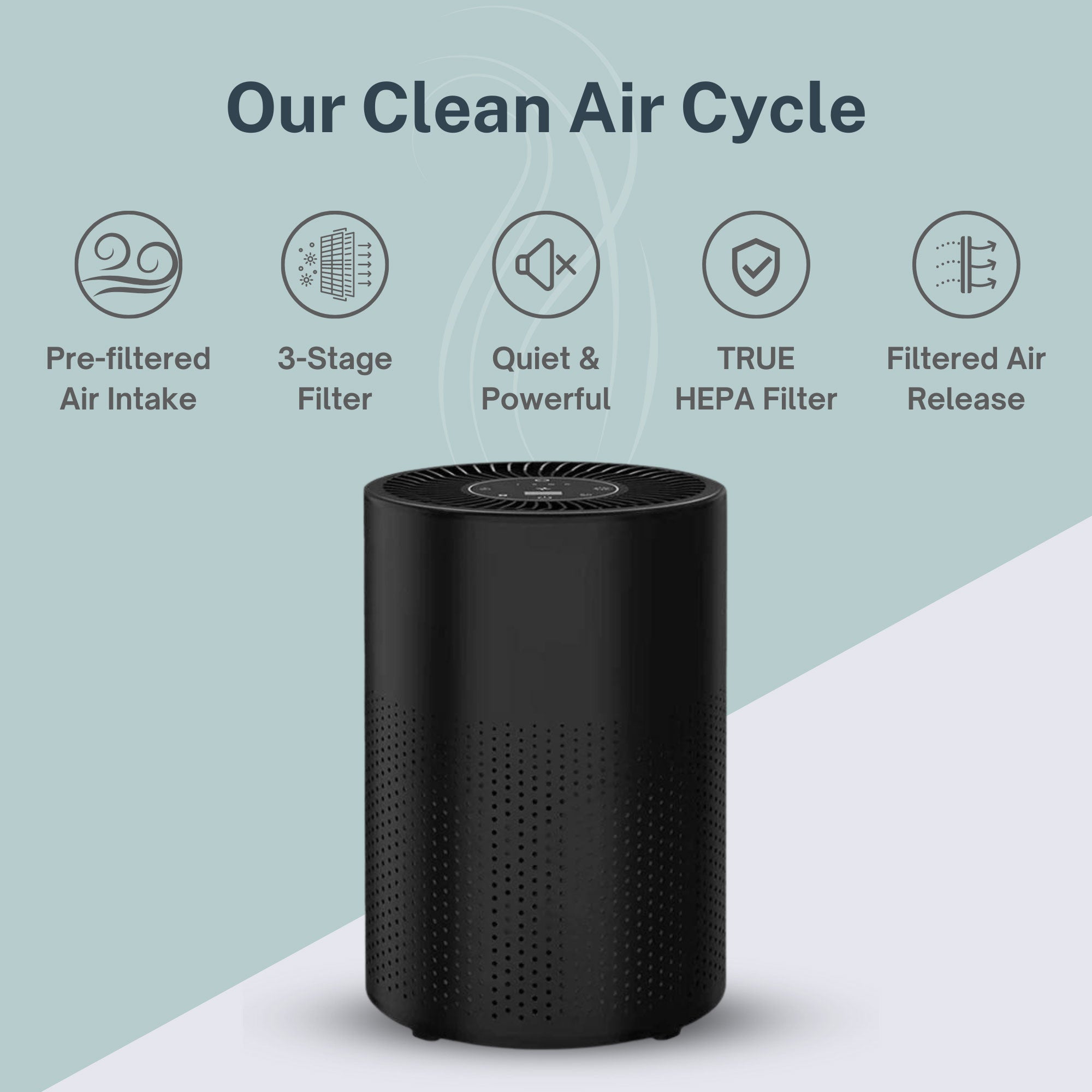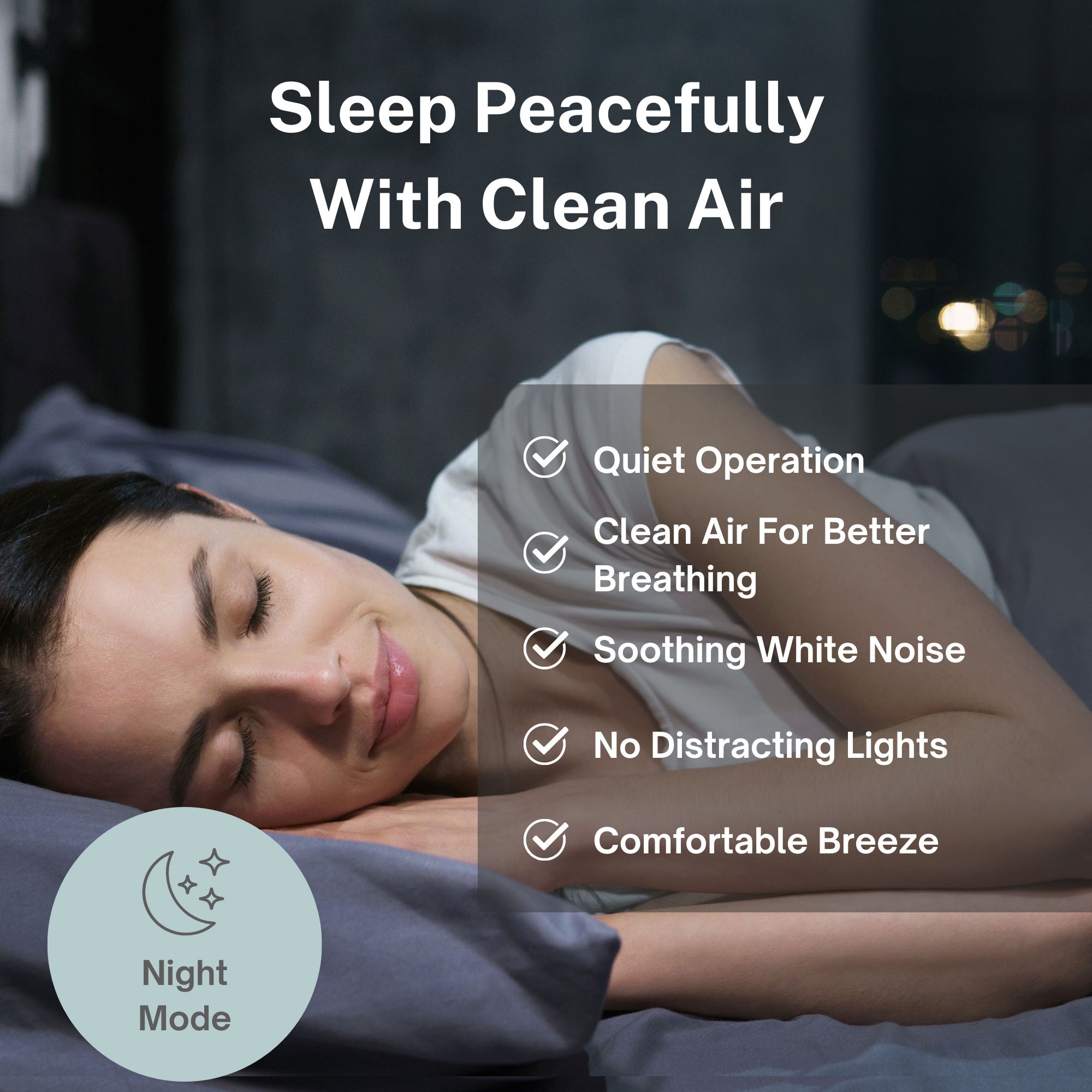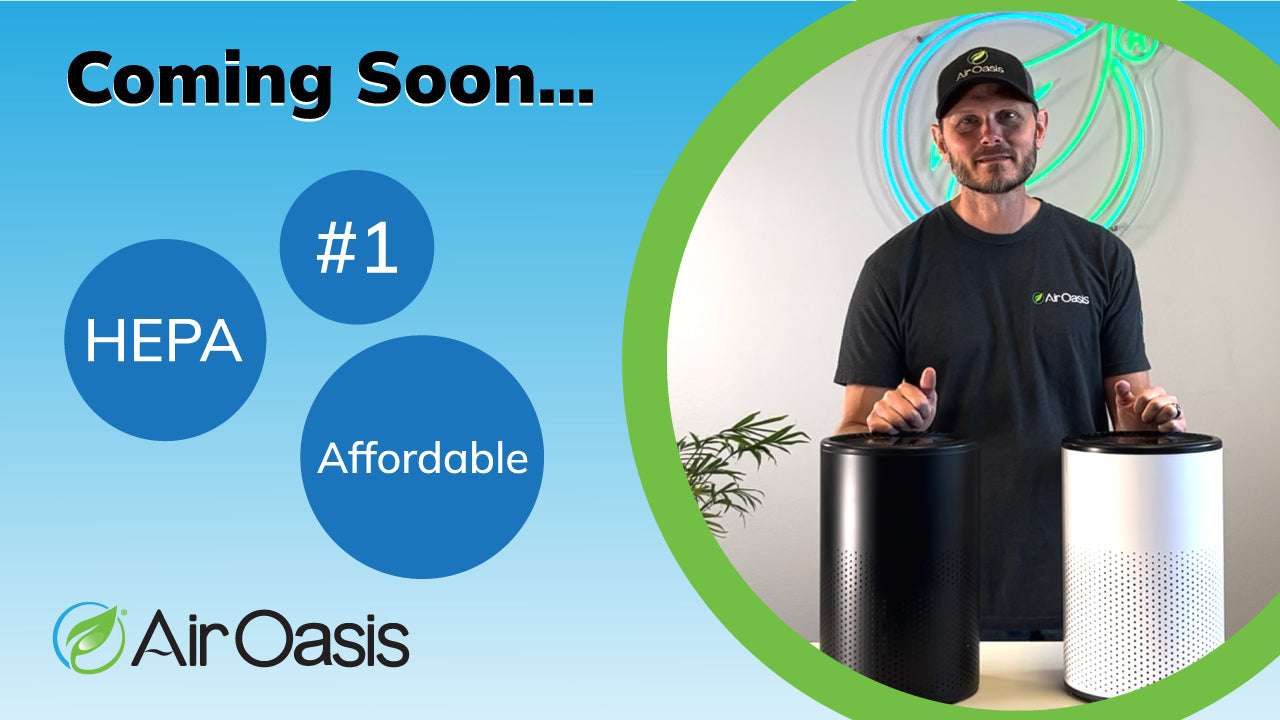Flu season is fast approaching. Now is the time to think more about the quality of the air we breathe indoors, both at home and at work. Many of us think about immune-boosting foods and supplements and stocking up on tissues and hand sanitizer, but indoor air quality is a crucial aspect that we often overlook.
Let’s discuss the importance of clean indoor air during flu season, the factors that affect indoor air quality, and how you can improve it in your home to protect yourself and your loved ones this year and beyond.
Does Indoor Air Quality Matter?
Short answer: yes.
Indoor air quality matters for health and comfort year-round, but especially during flu season. According to the Environmental Protection Agency (EPA), Americans spend an average of 90% of their time indoors, where some pollutants are two to five times higher than typical outdoor concentrations.
When we think of flu prevention, we focus on vaccines, good hygiene, and avoiding crowded places. While these are great defenses against the flu virus, maintaining clean indoor air can significantly complement your flu prevention efforts. Here’s why:
- Virus Transmission: The influenza virus can be transmitted through tiny respiratory droplets suspended in the air. Poor indoor air quality can increase the concentration of these droplets, making it easier for the virus to spread indoors.
- Weakened Immune System: Breathing in pollutants and allergens can weaken your immune system, making you more susceptible to infections like the flu.
- Symptom Severity: Exposure to indoor air contaminants can exacerbate flu symptoms, making you feel even worse if you get sick.
What Affects Indoor Air Quality?
Several factors influence indoor air quality, and understanding them is the first step toward improving it at home.
Ventilation
Insufficient ventilation can trap indoor pollutants, including viruses, inside your home. Proper ventilation and filtration ensure a continuous exchange of indoor and outdoor air.
Airborne Particles
Dust, pet dander, pollen, and even viral particles can be suspended in the air, affecting indoor air quality and, as a result, your respiratory health.
Chemical Pollutants
The EPA also states that in recent decades, indoor concentrations of some pollutants have increased due to energy-efficient construction and increased use of synthetic materials, furnishings, and personal care and cleaning products. The volatile organic compounds (VOCs) release harmful chemicals into the air.
Indoor Humidity and Flu Season
Both excessively dry and overly humid conditions can worsen indoor air quality. Maintaining the optimal humidity level, generally agreed to be around 30-50% relative humidity, is ideal.
Here are some examples of how indoor humidity influences susceptibility to the flu and other viruses.
You can purchase a hygrometer to measure the relative humidity in your home. Depending on the time of year and the climate in your location, you may need a humidifier or a dehumidifier.
Indoor Air Flu Prevention Options
To boost your flu prevention efforts, consider these strategies to improve indoor air quality.
Ensure Proper Ventilation
Regularly ventilate your home by opening windows and using exhaust fans, especially when cooking or using household chemicals. This helps to dilute indoor pollutants and improve air circulation.
Minimize Indoor Pollutants
Reduce sources of indoor pollutants by using eco-friendly cleaning products, maintaining proper ventilation when painting or using chemicals, and regularly cleaning and vacuuming to minimize dust and allergens.
Air Purifiers
Investing in high-quality air purifiers with HEPA filtration can significantly improve indoor air quality. Air purifiers can effectively capture and remove airborne particles, including viruses and allergens, helping to reduce the risk of flu transmission. Look for air purifiers with a Clean Air Delivery Rate (CADR) suitable for your room size and consider those with additional features like UV-C and silver ion filtration.
Air Purifier Technology to Fight the Flu
We designed the Air Oasis iAdaptAir® to exceed your expectations. It uses five technologies to purify your air–HEPA filters, carbon filtration, UV light, silver ions, and bi-polar ionization. You can read more about the research behind these technologies on our science page.
Air purifiers with high-efficiency particulate air (HEPA) filters effectively remove at least 99.97% of viruses, dust, pollen, mold, bacteria, and other airborne allergens. HEPA filters are the most effective option to eliminate as many contaminants from the air as possible.
Activated carbon filters work to filter out VOCs, which helps eliminate odors. Harmful pollutants such as gasses and odors commonly slip through even HEPA filters, making activated carbon filters significantly beneficial as a second layer of protection against these toxic substances.
The silver ion filter disrupts the DNA of viruses, mold, and bacteria, sterilizing pathogens and reducing them by up to 99%.
Next, the UV light, used to sterilize hospital rooms for almost 100 years, is a time-tested technology. The light destroys pathogens that have made it past the first layers of protection, leading to a remarkable 99.9% sterilization rate.
For the final step of defense against the flu and other viruses, bi-polar ionization works to actively hunt down and eradicate contaminants in your home without producing static electricity or ozone.
The iAdaptAir® is available in three sizes to suit whatever space is necessary and is low-maintenance–filters typically only need to be replaced once to twice a year.





